Connect Speakers To TV
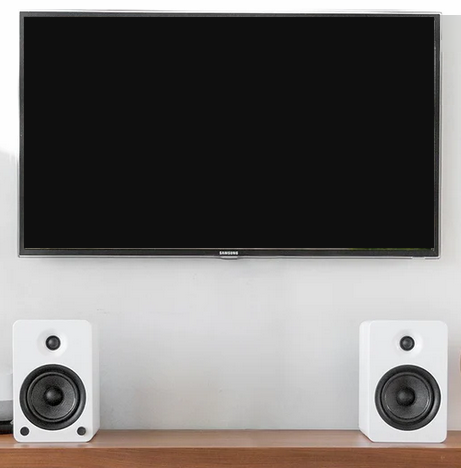
Question: Can I connect external speakers to my TV for better sound?
Answer: Yes, you not only can but you should. Connecting external speakers will enhance your TV audio experience and add a
much richer sound field.
What Are Speaker Drivers and How Do They Work?
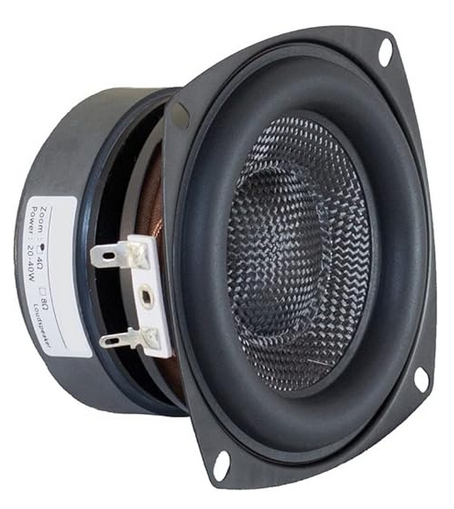
Loudspeaker drivers work as transducers, converting electric energy (audio signals) to mechanical wave energy (sound waves)
which our ears can hear. They are built with a voice coil suspended in a magnetic structure and work on the principle of electromagnetic induction.
Tweeters, Mid-range, Woofers and Subwoofers
Speakers have to be designed differently so that they can perform best at specific ranges of frequencies.
Tweeters are the very small speakers designed for the very high frequencies while woofers are the very large speakers
designed for the very low frequencies. Because subwoofers are so large, they tend to be housed in a larger and separate speaker housing.
Mid-range speakers are between tweeters and woofers and are usually found along with the tweeters in the same housing.
Why are built-in TV speakers so poor in sound quality?
Most so-called smart TVs are flat panel design. The thinner the display, the less room for speakers. The speaker design has to be compromised in order to fit into the TV.

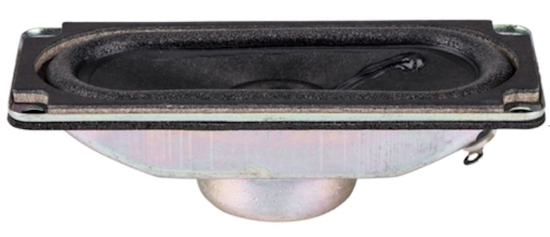
Typical TV speakers tend to be small and flat, limiting their capability to reproduce the best overall sounds.
External Speaker Choices for TV
There are basically four categories for adding great sound to your TV.
These are the soundbar, powered speakers, audio video receiver home theater setup and wireless speakers.

The soundbar works for those in a small apartment or a small to medium sized room.
The soundbar is easy to setup and takes up very little space.
Soundbars have a variety of wired connections for the TV and some have wireless Bluetooth. Some even come with a subwoofer.
Although the soundbar speakers will be better than built-in TV speakers, the sound will not be as good as the next category, powered
speakers.

Stereo powered speakers have larger drivers so they can move more air giving better sound. Powered speakers have a built-in
amplifier and many have the full compliment of connections for the TV, even Bluetooth. So you can use these speakers with
your mobile phone or computer as well.
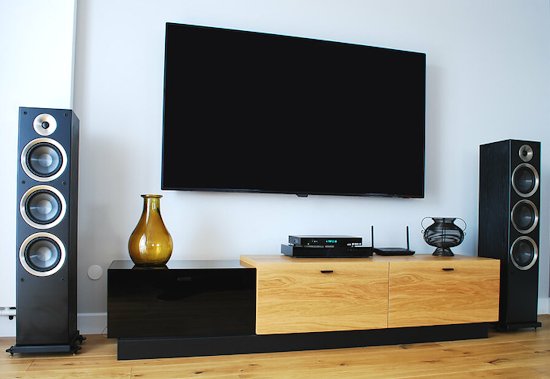
The very best sound experience will be from a full surround sound speaker setup and an audio video receiver. This setup requires
the most work to implement and can be the most costly but the results are worth the effort. Larger rooms are needed for the
surround experience. Six, seven, nine, eleven or more full size speakers placed around the room, in the ceiling for Dolby
Atmos, create the home theater experience.
Wireless speakers give you the convenience of no wires, portability, multi-purpose use and voice assistants. However,
wireless speakers have some drawbacks.
Signal interference, battery life, signal range, pairing issues, audio lag/sync issues and sound quality to name
a few.
1. Connect a Soundbar directly to the TV
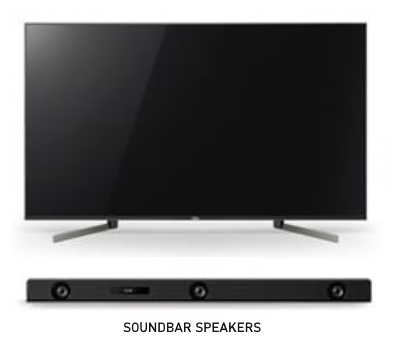
Soundbars generally have better speakers than the TV. Soundbars can have slightly larger mid-range speakers, 2 to 3 inches, and the
tweeters for the high frequencies, however soundbars still have limited space so the larger speakers will not fit into the
soundbar. Also the soundbar is only moving air from the front, no sound from the rear of the listener.
2. Connect a pair of powered speakers to the TV
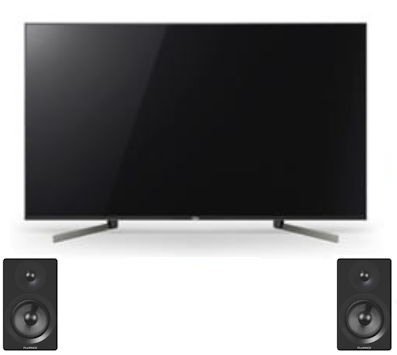
Powered speakers can have larger mid-range speakers, 4 to 8 inches, than a soundbar and can be placed farther apart for better sound.
The engineering, design and quality of these speakers is usually better than a standard soundbar. You can add a subwoofer for bass.
You will not be getting surround sound from this setup.
3. Connect an Audio Video Receiver (AVR) with surround sound speakers
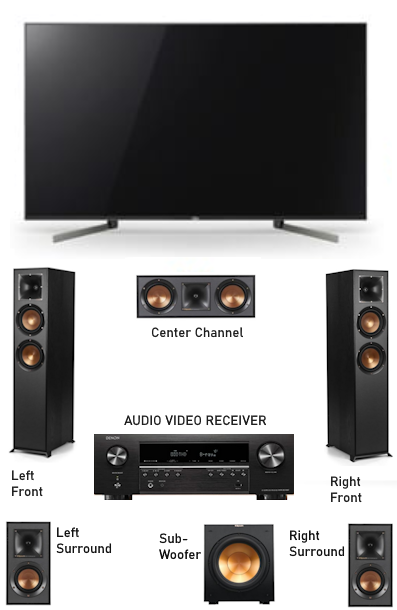
Full size mid-range speakers, 8 to 10 inches, and full size subwoofer, up to 18 inches, with plenty of power from the AVR surround the listener and provide the best sound experience. Home theater setups tend to have the best speaker design and quality but with additional cost.
4. Wireless speaker setup
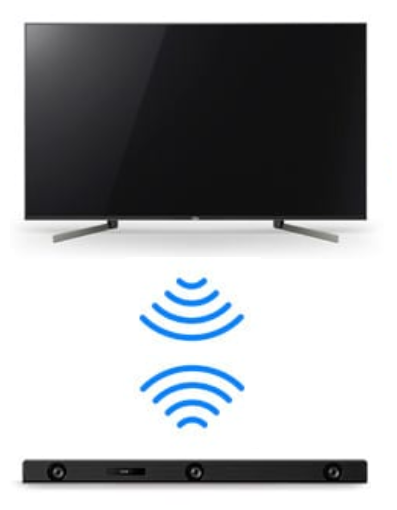
Bluetooth wireless - TV to Soundbar
With wireless technologies such as Bluetooth or Wi-Fi, always check for compatibility between products. Some TV makers, in a desire to
sell you their sound device, may only allow their soundbar to function with their TVs. Other soundbars may not work.

The Bluetooth functionality built into a TV is generally compatible with a Bluetooth amplifier, meaning you can connect your TV's audio output to a Bluetooth amplifier wirelessly to listen through external speakers; however, check your specific TV and amplifier manuals to confirm compatibility.
If your TV does not have Bluetooth built-in then you can add a Bluetooth transmitter by connecting it to the TV to get wireless
audio.
Bluetooth audio is compressed and encrypted. Encryption keys are generated during the pairing process.
There are several different compression/decompression (codecs) standards that may be used by Bluetooth components.
SBC – SBC is the default Bluetooth codec, the lowest common denominator. Its maximum bit rate is 345 kilobits per second (kbps), which is far from CD quality. The biggest downside to SBC is its relatively high latency. If you’re using SBC for TV, YouTube videos, or gaming, you may encounter some annoying audio delays.
aptX – An optional codec that promises slightly better sound quality and lower latency than SBC. Its bit rate is 384 kpbs. It's not supported by iPhones.
aptX HD – aptX HD increases the bit rate to 576 kbps, without adding latency. That gets you closer to CD quality.
AAC – Even though its bit rate maxes out around 250 kbps, AAC can give you better sound than SBC, especially when used with Apple devices. This is because AAC employs a technique called psychoacoustic modeling. That means the compression algorithm is designed to compress the parts that don’t matter as much to our perception of sound quality.
LDAC – LDAC, a Sony technology, has the greatest hi-fi potential. It gives you bit-rate options of 330, 660, and 990 kbps.
For better sound, choose 660 kbps or 990 kbps. You can use 330 kbps (which is often the default LDAC setting on Android phones) if you need a more reliable connection.
Compact Disc is 1,411 kbps.
CDs hold up to 74 minutes of uncompressed stereo digital audio. The audio is stored using Pulse Code Modulation (PCM).
• You can also connect vintage stereo amplifiers, HDMI audio converters, headphones, and custom setups.
Quick and easy vs true surround sound
Of the four categories, the easy, quick, convenient, least intrusive solution is the Soundbar. However, while soundbars will
give you better sound than your TV speakers, soundbars do not produce
the best quality sound.
The wireless speaker solution also is convenient and clean, however, interference can cause signal loss
and spoil your listening experience.
Powered speakers are small, all-in-one solutions which look good and can provide very good
sound but not as good as the best solution, the AV Receiver surround sound multi-speaker setup.
Powered Speakers

Powered speakers, also known as active speakers, have built-in amplifiers, while passive speakers require an external amplifier.
Powered speakers typically give you 2-channel stereo sound and connect with a variety of audio cables depending on which audio output ports
are available on the TV and which audio input ports are available on the powered speaker.
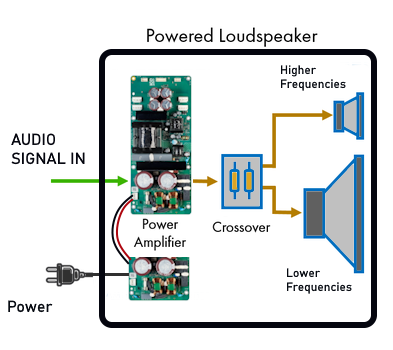
The small powered speakers come in a pair with one speaker housing the amp and connecting to the other speaker which is passive.
Both speakers are powered by the amplifier inside the main speaker. Powered speakers have some disadvantages compared to speakers
using an external amplifier, however they also have some advantages.
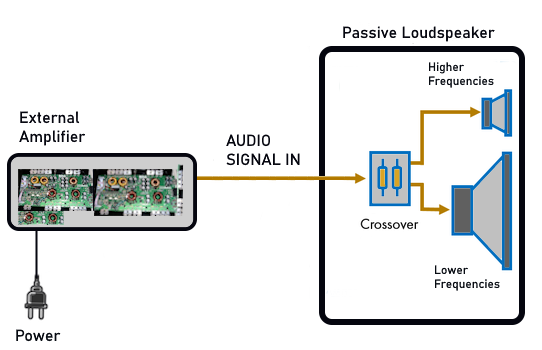
The trend in powered speakers is to provide an all-in-one solution including speakers, the amplifier, wireless connectivity and all the
possible connection options for TV or computer.
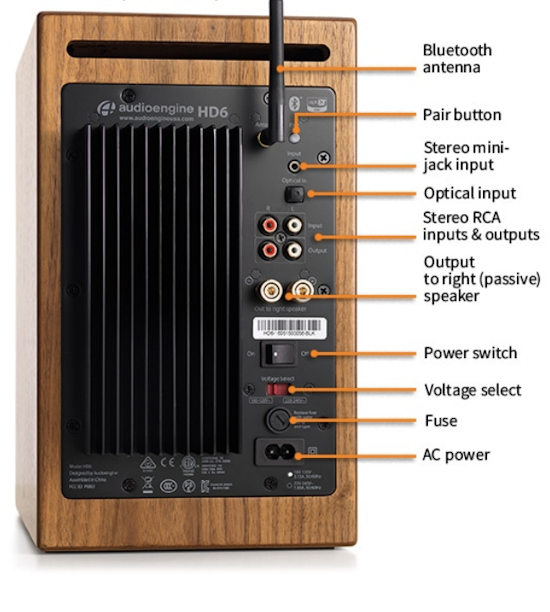
How to Connect to TV
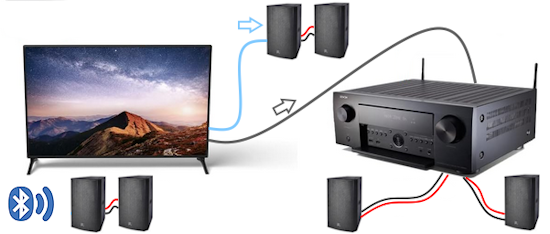
Common cables used to connect AV devices include HDMI, or Optical digital audio cables and RCA analog audio cables.
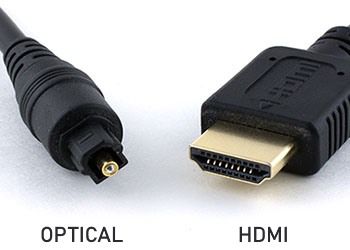

The optical audio cable carries 2 channel stereo or Dolby Digital 5.1 surround sound while the HDMI cable connection can handle everything up to the most
advanced high end audio formats including uncompressed Dolby TrueHD.
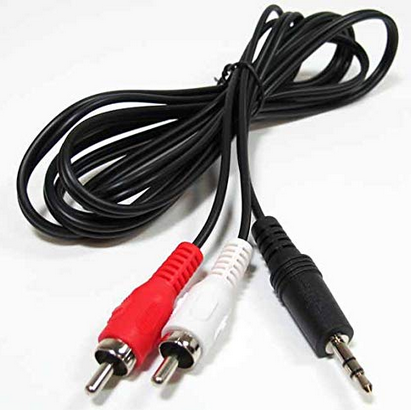
RCA analog stereo with 3.5mm for headphone jack (adapter cable)
To get sound from the TV to external speakers, use a wired audio cable such as HDMI, Optical or RCA analog stereo. Connect one end
of the cable to the correct TV audio output port and the other end to the matching audio input port on the sound device. Wireless
audio such as Bluetooth is also an option.
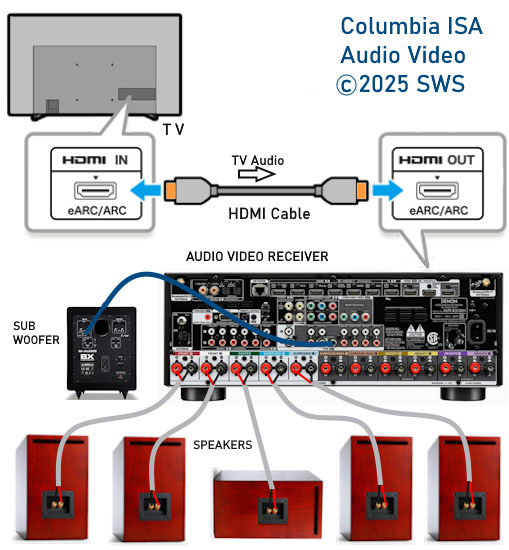
Connecting TV using HDMI and an AVR with surround speakers.
TV sound source can be internet streaming content or broadcast over-the-air or cable TV or DVD or Blu-ray and so forth.
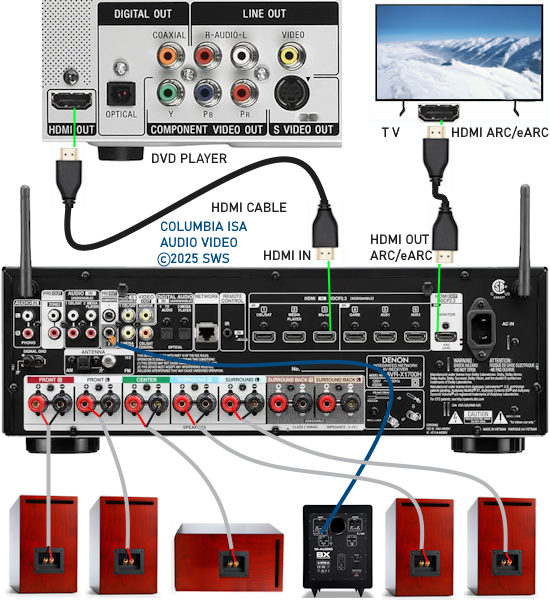
Connect TV to Soundbar using Optical audio cable

Select the optical input on the soundbar, select the optical output on the TV settings, select audio format in TV settings.
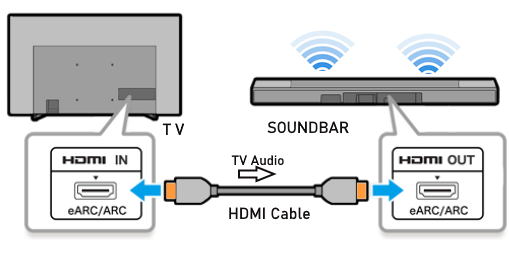
If using HDMI > Connect the HDMI cable:
1. Use an HDMI cable to connect the HDMI ARC/eARC port on your soundbar to the
HDMI ARC/eARC port (usually labeled "ARC" or "eARC") on your TV.
2. Select the input mode on the soundbar:
Press the source button on the soundbar or its remote control to cycle through input options.
Select the "D.IN" or "TV ARC" mode, which indicates that the soundbar is receiving audio
from the TV via the HDMI ARC/eARC connection.
3. Configure TV settings:
For HDMI ARC, enable HDMI CEC: In your TV's settings, locate the HDMI CEC or Anynet+ (on Samsung TVs) settings and enable them. This allows the TV to control the soundbar's power and volume via the TV remote.
Set sound output to HDMI ARC: In your TV's sound settings, select "Receiver (HDMI)" or "HDMI ARC" as the output speaker.
4. Verify connection:
You should see the "ARC" or "eARC" display on the soundbar, indicating a successful connection.
You should also be able to hear sound from the soundbar when playing content on your TV. If not, try setting the TV sound
output format to PCM. Adjust the volume.
Step by Step: Connect TV to Powered Speakers
1. Connect audio cable to TV audio output port (Optical or HDMI ARC or analog stereo RCA or 3.5mm)
2. Connect the other end of audio cable to powered speaker audio input port
3. Connect the speaker with the built-in amp to the passive speaker
4. Plug power cord of speaker with the amplifier into an outlet
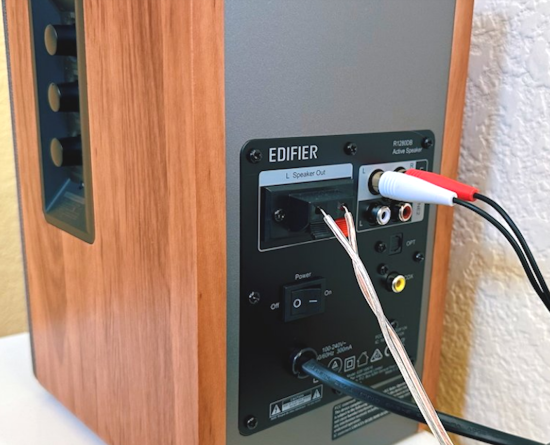
When ready, turn on the power to the amplified speaker, select the correct source input and adjust the volume.

TV Audio Output Ports
OPTICAL, HDMI ARC and Headphones

The powered speaker above offers HDMI ARC, Optical, RCA analog and even turntable hookup.
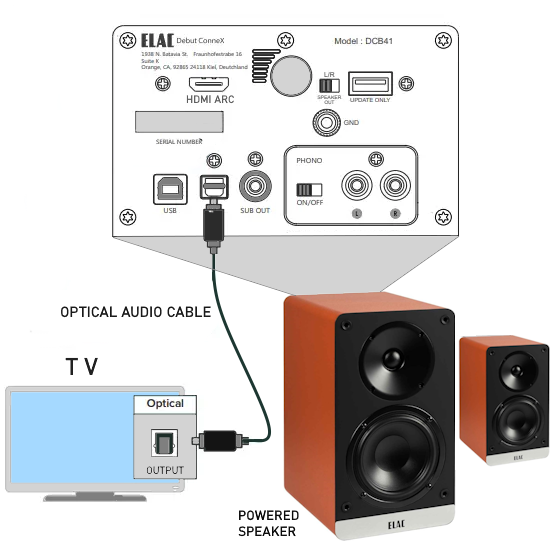
Connect Speakers to TV - Optical Audio Connection
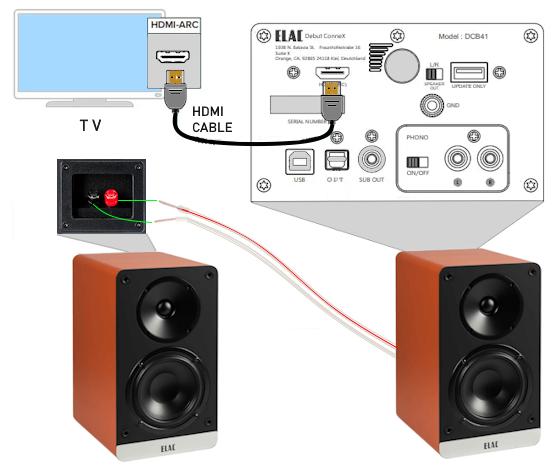
Connect Speakers to TV - HDMI ARC/eARC Audio Connection
Adapters and Converters
A digital to analog converter or DAC can be used to connect speakers to a TV where the speakers or the TV have incompatible audio
inputs/outputs. For example, your older TV only has optical audio out and you want to connect a vintage stereo or powered speakers
which only have RCA analog inputs.

You want to listen to your TV through headphones but your TV has no headphones output. The DAC could be the solution for any number
of incompatibilities.
HDMI Audio Adapter
TV sends audio to the HDMI audio adapter which converts the digital audio to analog audio to drive powered speakers or amp with passive speakers.

Three additional steps are required to get sound from TV to external speakers.

Select the correct input source on the sound device.
For example, powered speakers, soundbars and AV Receivers have
multiple inputs so you need to select the input where the TV is hooked up to on the sound device.
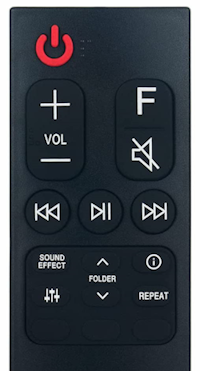
How to select the input you want:
Soundbars, AVRs and Powered Speakers will usually have a remote control. If no remote is provided, there will be a button which
can be pressed to select the various inputs. This could be the volume control knob. Remote controls will designate the input
selection with different buttons such as "Input" or "Source" or will use "F" or a symbol such as an arrow. Press this to cycle
through the various input sources until you find the source you want. Some remotes will have a dedicated button for Bluetooth and
AUX or OPT for the optical input.

Select TV sound output option.
On the TV go to "Home" > "Settings" > "Sound" > "Sound Output" and select the option which matches the audio connection that
you have chosen to use. For example, if you have connected an optical audio cable from TV to sound system, select the Optical
output. By default, the TV internal speakers are selected so you need to switch over to the option you have chosen to use.


Select TV sound output format.
On the TV go to "Home" > "Settings" > "Sound" > "Expert Settings" > "Audio output format" and select the audio format which
matches your sound setup. For example, if you are using two speakers, you have a stereo setup and you select "PCM". For a
surround sound setup, select "Bitstream" or "Pass-through" or "Dolby Digital". Another option on some TVs is "AUTO". Selecting
"AUTO" means the TV will automatically select the proper option based on the source content. This does not always work out.


Samsung TV menu for audio format selection
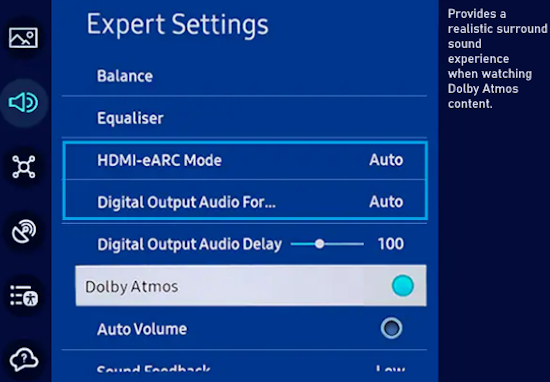
Samsung TV menu for enabling Dolby Atmos
LG TV SOUND OUTPUT OPTIONS
1. Press the "Settings" button on your LG TV remote control.
(the settings button is usually a Gear icon)

2. Select "All Settings" from the menu.
3. Choose "Sound" from the settings menu.
4. Select "Sound Out" to choose your audio output.
5. Select the desired output option, such as "Internal TV Speaker," "Optical," or "HDMI ARC".


Audio Format Options:
Common audio output formats include PCM (Pulse Code Modulation - uncompressed), Dolby Digital, DTS, and various surround sound options.
PCM: Best for basic stereo sound quality, as it is uncompressed.
Dolby Digital/DTS: Suitable for surround sound if your external sound device supports these formats.
Bitstream: Sends the encoded audio data without processing directly to your AV receiver for decoding, often used for advanced surround sound formats.
Is Passthrough and Bitstream the same thing?
Not exactly. While Passthrough refers to the action of sending audio without any processing, bitstream refers to the audio format of the audio
data itself.
When you select "bitstream passthrough", it means that the device will send the encoded surround sound audio data directly to your receiver without decoding it first, allowing your receiver to handle the decoding process.
If you have the audio cable connected from TV to sound system with the correct input selected but cannot get any sound, the problem could
be the audio output format. Try selecting "PCM".
(Make sure all your devices are Powered ON)
HDMI ARC CEC
A fourth step may be required but only if you are connecting with HDMI ARC. This is the enabling of HDMI CEC which Samsung calls
Anynet+. LG refers to HDMI-CEC (Consumer Electronics Control) as Simplink.
On the Samsung TV go to:
Home> Settings> All Settings> Connection> External Device Manager> Anynet+ (HDMI-CEC)> Set Anynet+ (HDMI-CEC) to "On".

TV Sound Output Options
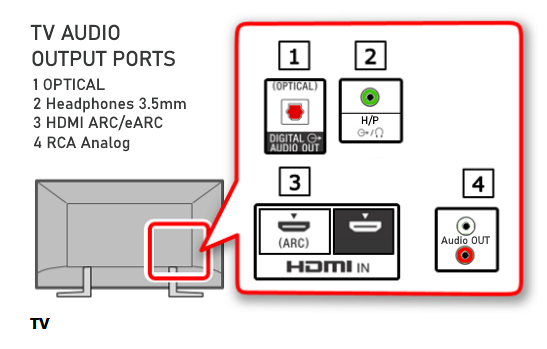
TV audio output ports can be found on the rear of the TV. Look along the sides and bottom to find them.

TV sound can be sent out to external sound devices using several different audio output ports found on the TV.
Also audio can be sent out wirelessly using Bluetooth wireless audio transmitter which is built-in to many modern TVs.

TV Audio Output Ports
You have six or more options to connect TV to speakers although your specific TV may not have every option available.
The following are a few of the options:
3.5 mm analog audio cable

Plug one end of the audio cable into the TV's 3.5 mm audio output, usually labeled "Audio Out" or "Headphone Jack". Then, plug the other end into the speakers' 3.5 mm input port or white and red RCA audio input ports.

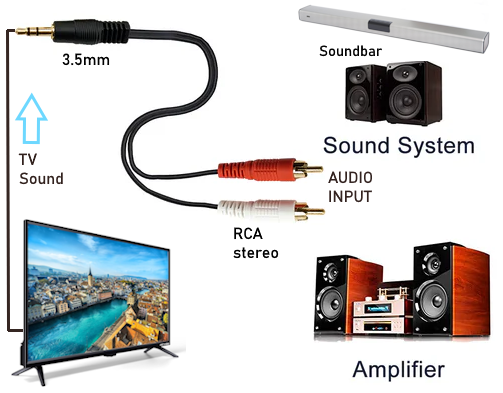
Powered speakers and soundbars have built-in amplifiers.
For passive speakers, use a mini-amplifier or stereo receiver

RCA audio cables
Connect the red and white RCA output ports on the TV to the RCA audio input ports on the speakers. RCA cables are a simple way to connect speakers, but they only carry stereo sound. These ports are found on older TVs.
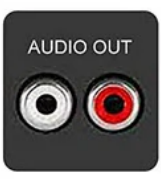

Optical audio cable


Also known as TOSLINK or SPDIF cables, these transmit digital audio signals capable of 5.1 surround sound. Plug one end of the cable into the TV's optical output port, usually labeled "Digital Audio Optical Out". Then, plug the other end into the speakers' optical audio input port.

HDMI ARC/eARC
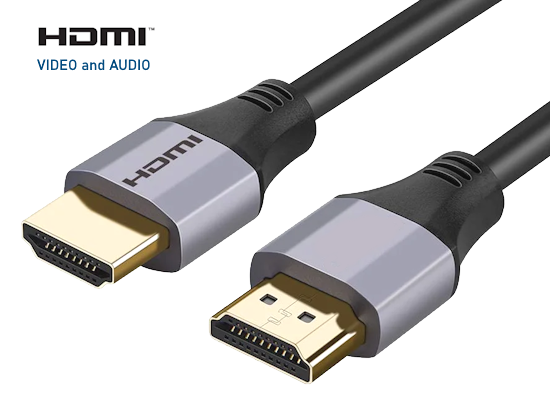
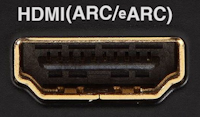
Use the HDMI Audio Return Channel (ARC/eARC) to connect the TV to the speakers/sound system using an HDMI cable. One of the HDMI ports on
your TV has both input and audio output capabilities. It is labeled HDMI ARC or HDMI ARC/eARC.
HDMI ARC is the original audio output capable of
stereo or 5.1 surround sound while HDMI eARC is the enhanced audio output capable of handling the higher quality surround audio formats.
What is the difference between HDMI ARC and HDMI eARC?
HDMI ARC is older and has had problems with implementation. HDMI ARC is limited, capable of stereo and 5.1 channel audio. HDMI ARC
also requires the CEC feature to be enabled which is often disabled by default. HDMI eARC is newer, should not require CEC and is capable
of stereo, 5.1, 7.1 and higher audio including Dolby Atmos and uncompressed Dolby TrueHD.
HDMI ARC (Audio Return Channel) needs CEC (Consumer Electronics Control) enabled because CEC acts as the communication protocol that allows devices to communicate over HDMI, enabling features like controlling your soundbar volume with your TV remote, which is essential for using ARC to send audio back from the TV to a soundbar. CEC is the bridge that facilitates the handshake between devices needed for ARC functionality. HDMI ARC has become a standard feature on modern televisions and usually works fine. The CEC connection, on the other hand, does not always work as it should, particularly when connecting devices of mixed brands together.
Unlike HDMI ARC, HDMI eARC does not require HDMI-CEC to function. The device detection system for HDMI eARC is already built in. HDMI eARC stands for HDMI “Enhanced Audio Return Channel.” The eARC standard was introduced in the latest version of HDMI (HDMI 2.1). It works in much the same way as HDMI ARC, though it boasts even higher audio bandwidth. This extra bandwidth allows eARC to support higher-quality surround-sound formats.
Does HDMI ARC Work with HDMI eARC?
Although HDMI Audio Return Channel (ARC) and HDMI Enhanced Audio Return Channel (eARC) share similarities, their functionality is only partially compatible. If your equipment solely supports ARC, it cannot take advantage of the enhancements provided by eARC. Conversely, a device equipped with eARC can still work with ARC-only devices; however, this setup will lack the superior audio features offered by eARC.
HDMI ARC - Enabling CEC
Each TV maker has a different name for HDMI CEC. Samsung calls CEC, Anynet+

Go into the TV menus and turn HDMI CEC "ON"
1. Press the "Home" button on your TV remote
2. Select Settings
3. Select All Settings
4. Select Connection
5. Select External Device Manager
6. Select Anynet+ (HDMI-CEC)
7. Set Anynet+ (HDMI-CEC) to On
8. Connect an HDMI-ARC-CEC-compliant device to your TV
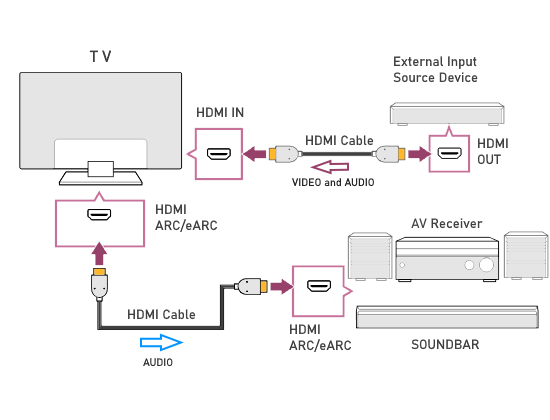
Audio Video Receiver (AVR) HDMI ARC/eARC Connection

The AVR HDMI ARC/eARC port usually indicates "OUT" however the OUT relates to the fact that the port outputs VIDEO to the TV but
this port also is an AUDIO input from the TV. It is a two way HDMI cable connection. So TV audio can be sent to the AVR for output to
the AVR's connected loudspeakers.
How to connect HDMI ARC/eARC between TV and Audio Video Receiver using an HDMI cable
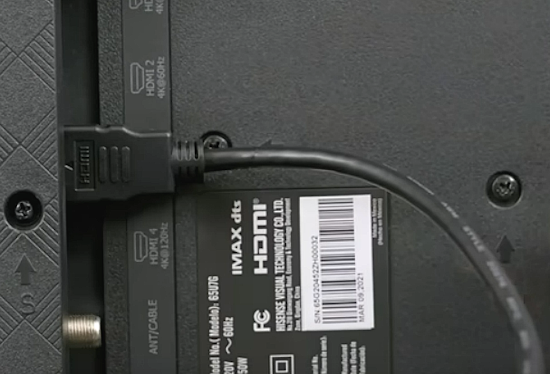
Connect one end of the HDMI cable to the TV HDMI ARC/eARC port.

Connect the other end of the HDMI cable to the AV Receiver's HDMI ARC/eARC OUT port.
How do I play the audio from my TV through my AV Receiver and out to the speakers?
For TV audio through the AV Receiver and then out to loudspeakers, select the AV Receiver's HDMI ARC/eARC settings to "ON" or
press the "TV AUDIO" button on the remote control of the AV Receiver or turn the input select knob on the front of the AVR to
select "TV Audio".
AUTOMATIC SELECTION - HDMI Settings
Press the "SETUP" button on the remote of the AV Receiver

On the TV, you should see a menu from the AV Receiver. Be sure to select the correct HDMI input source on the TV.
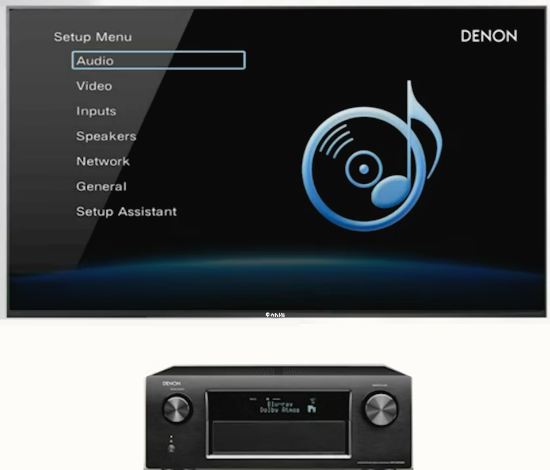
Main menu where you can select Audio settings or Video settings or Network setup and so forth.
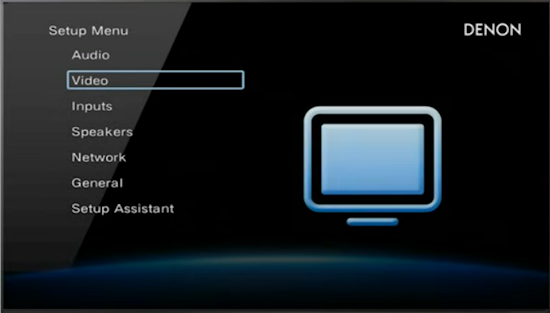
Move down to the "VIDEO" selection.

Next, select "HDMI Setup"




You can also disable the AV Receiver from automatically switching to the "TV Audio" source when a CEC command is detected. To do this, access the AVR's menu and select: Video -> HDMI Setup -> TV Audio Switching -> Off.
Disabling this option means you will have to manually select the "TV Audio" source when using ARC (Audio Return Channel) with the AV Receiver.
My AV Receiver is not playing sound from the TV. What is wrong?
If your AV receiver isn't playing TV audio, the most likely culprit is incorrect settings on your TV or AV receiver, particularly regarding the HDMI Audio Return Channel (ARC) feature; make sure both devices have ARC enabled, the correct HDMI port is selected on the TV, and the audio output on your TV is set to send sound through the HDMI connection to the AV receiver.
Check for:
HDMI Connection:
Be sure you're using an HDMI cable connected to the TV's designated HDMI "ARC" port and the corresponding HDMI "ARC" port on your AV receiver.
TV Settings:
Audio Output: Check that your TV's audio output setting is set to "HDMI".
ARC/eARC: Verify that ARC (or eARC on newer TVs) is enabled in your TV's settings.
CEC (Consumer Electronics Control): Make sure CEC is enabled on both your TV and receiver to allow automatic switching.
AV Receiver Settings:
HDMI Settings: Go into your AV receiver's HDMI settings and ensure HDMI ARC is activated.
Input Selection: Be sure that your receiver is set to the correct input for your TV.
Cable Issues: Try using a different HDMI cable to rule out cable problems.
Firmware Update: Check for available firmware updates on both your TV and AV receiver.
Resetting Devices: Try resetting your receiver to factory settings
(You could use the Optical audio connection from the TV to the AV Receiver)
Bluetooth Wireless Audio

Many TVs have Bluetooth wireless audio transmitters built-in for stereo sound to Bluetooth capable sound systems such as
soundbars, powered speakers, AV Receivers, headphones and more. The "Pairing" process connects the TV to the speaker, then select the
bluetooth input on the speaker or soundbar.
Turn on the Bluetooth speaker and put it in pairing mode. Then, on the TV, go to "Settings", select Bluetooth, and then Add Device. Select the Bluetooth speaker in the list to pair/connect it.
2023 - 2024 Samsung TVs Bluetooth setup:
Home> Settings > All Settings > Sound > Sound Output > Bluetooth Speaker List


Place your sound device into Bluetooth Pairing Mode
Refresh if sound device does not show up.
On your TV, select your sound device from the list of available Bluetooth devices.

Select "Pair and connect"

Message "your sound device" is connected
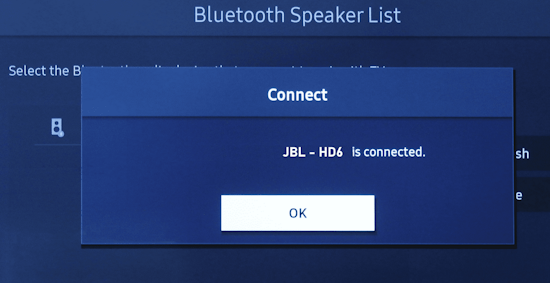
Select "OK"
LG TV 2025 Bluetooth setup:
Power on the TV and the Bluetooth device. Put the Bluetooth device into pairing mode.
Long Press the "Settings" button on the LG TV remote control (gear icon). Next navigate to "Sound" and then "Sound Out".

Scroll down to "Use wireless Speaker". This is for headphones as well.

Navigate to and Select "Bluetooth Device".

The TV will
SEARCH for Bluetooth devices. Your Bluetooth device name should be displayed on the TV and should be paired automatically.

The TV speakers should be turned off automatically. Adjust the volume on the TV or the Bluetooth device. When the Bluetooth
device is powered off, the TV speakers should return to normal mode.
Bluetooth device not connecting
• Be sure Bluetooth is enabled on TV
• Be sure sound device is in pairing mode
• Be sure sound device is within range of TV
• Remove sound device from Bluetooth list and try pairing again
• Some TV software updates can contain errors and render TV functions inoperable. Notify customer support and hopefully a fix can be
offered at some point for downloading.
• Restart TV, power off (unplug) and on power on again. Try pairing again.
Add Bluetooth wireless audio to a TV
Plug a Firestick streaming device into the TV's HDMI input, select the Bluetooth speaker or headset in the Firestick on-screen menu,
pair and connect, and listen to audio from the TV. Another option is to add a Bluetooth transmitter to the TV audio output.
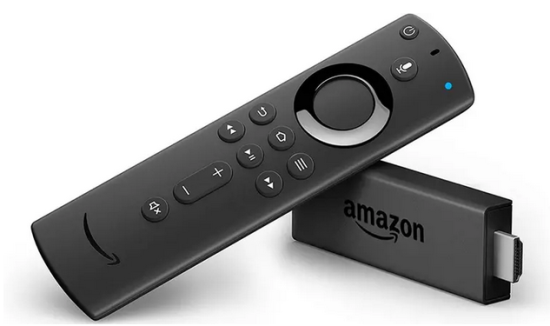
Firestick streaming device - How to select Bluetooth sound device for audio from TV.
Put your Bluetooth sound device into pairing mode, then on the TV select the input for the firestick and go to
Home> Settings> Controllers & Bluetooth Devices> Other Bluetooth Devices> Add Bluetooth Devices. Now Searching for
Bluetooth Devices..... When your sound device appears in the list, select it, "Pairing the Device". Once it pairs, a message
appears "Connected". Audio will be sent to the sound device.
Bluetooth TV connection
Bluetooth is a short range wireless technology built into some TV and speaker products. This hookup allows a wireless
connection for sound if your TV has Bluetooth and you have a Bluetooth speaker or Bluetooth adapter for a stereo.
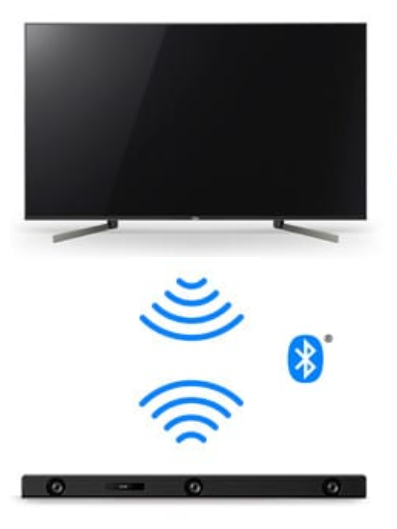
Many soundbars are Bluetooth capable. You can also get a Bluetooth adapter which can convert audio so you can
send and receive sound from devices which are not already Bluetooth capable.
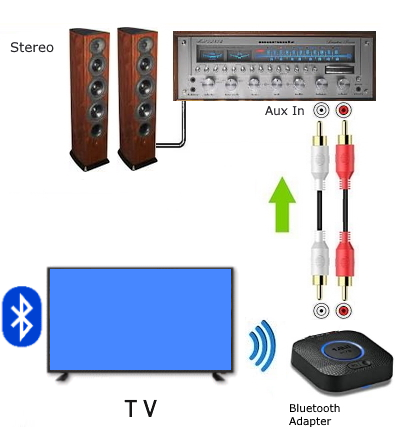
Bluetooth capable TV send audio to non-bluetooth capable device such as a vintage stereo receiver.
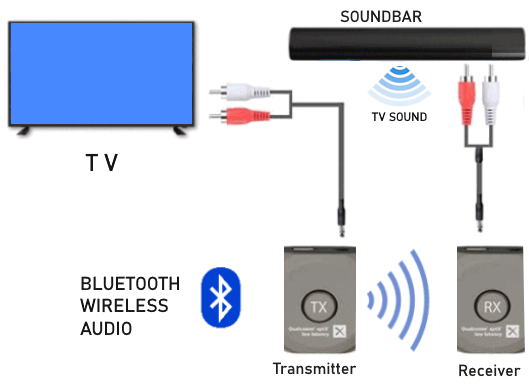
Older non-bluetooth capable TV send audio to non-bluetooth capable device wirelessly.
Bluetooth requires the devices to
"pair" with each other before transmissions begin. This can be an issue depending on the hardware used.
Bluetooth speakers can be placed anywhere near the TV for a wireless connection. Bluetooth stereo headphones
can also be used for private or enhanced volume listening.
•
Bluetooth Transmitter Receiver 3-in-1 Bluetooth 5.0 Audio Adapter
Stereo Headphones - Bluetooth wireless or wired. 65 hours playtime wireless.
WIRELESS CONNECTION: Updated Bluetooth version V5.2 ensures an ultra fast and virtually
unbreakable connection up to 33 feet (10 meters). USB charging and 3.5mm port for wired hookup.
Bluetooth 5.0 Transmitter for TV to Wireless Headphone/Speaker,
Bluetooth Adapter for TV w/Volume Control, AUX/RCA/Optical/Coaxial Audio Inputs, Plug n Play.
Bluetooth Speakers,Outdoor, Portable,Waterproof,Wireless Speaker,Dual Pairing,
Bluetooth 5.0,Loud Stereo,Booming Bass,1500 Mins Playtime
Auracast
Auracast is the next generation Bluetooth technology. Auracast delivers CD-quality 16-bit/44.1kHz audio with adaptive bitrates up to 800kbps, supported by Bluetooth 5.3+ hardware. Unlike classic Bluetooth's point-to-point limitations, Auracast transmitters can stream synchronized audio to unlimited receivers within range.
Some 2023-2024 Samsung TVs have Auracast and some 2025 OLED LG TVs have the feature. There are adapters, transmitters and
receivers for devices without Auracast.
Which audio output ports are available on your TV
Look on the back and sides of your TV to discover which audio output ports are available.
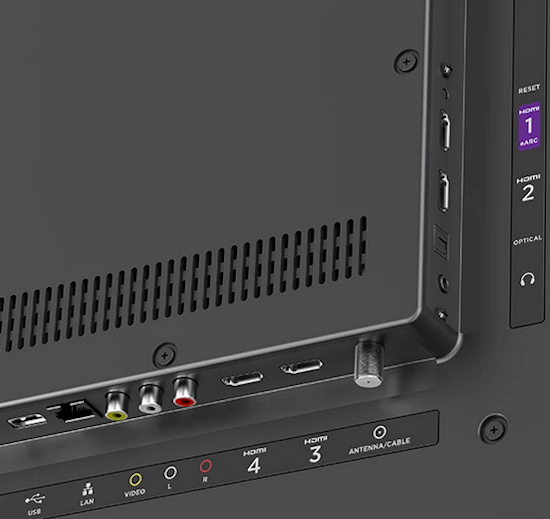


Some TVs have a 3.5mm mini AV input port instead of using the 3 RCA audio/video inputs (yellow, white, red). This is an input to the TV
and is not used for audio output.
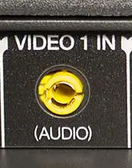
Check the TV user manual for a description
of the TV connections on your TV.
You may see something like the following:
TV Connections: 3 HDMI, 1 Composite, 1 USB, 1 Optical, and 1 Headphone
Also, you need to decide what type of speaker or sound system you want to use and make sure it has the compatible audio
inputs so the TV can connect.
Almost every Smart TV today has several methods to connect external sound devices for richer, more powerful sound. You have choices, from
small stereo powered speakers to soundbars to full surround sound setups. These can be connected using analog stereo, digital optical or HDMI cable connections.
The first step would be to look at your TV to discover which audio outputs are available. You may find a headphone output, an optical audio
output or an HDMI ARC or HDMI ARC/eARC port.
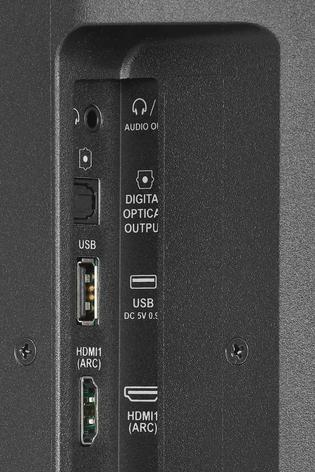
TV Audio Out Ports
This TV has three ways to connect external sound systems. From the top, the headphones audio output can be used to connect not only
headphones, but also a soundbar or powered speakers or a stereo receiver. This 3.5mm port can connect stereo speakers for amplified
sound.
The TV 3.5mm output, designed primarily to accommodate wired headphones, can also connect to any speaker system with a 3.5mm (aux) input. You'll just need a 3.5mm audio cable long enough to run between them.
You can get 3.5mm to RCA (white, red) stereo cables, so if your speaker has RCA inputs but your TV doesn't, but there is a 3.5mm port, or vice versa, this is a possible option. These audio adapter cables are very inexpensive and available online.
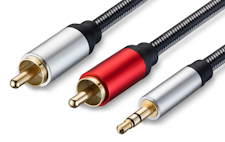
Below the headphones out is the digital optical audio output. This port connects using an optical audio cable. You can connect a soundbar, powered speakers or a surround sound system. Soundbars have an optical input as do many powered speakers and of course
Audio Video Receivers. This connection is limited to stereo or 5.1 surround sound.
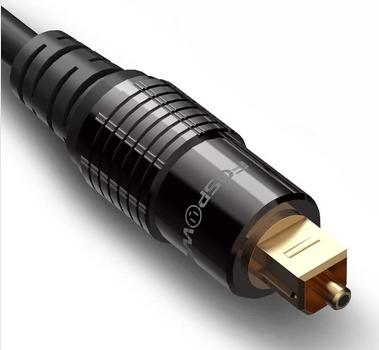
Optical uses the medium of light to transmit data through a audio cable’s optical fibers which can be made of plastic, glass or silica, and can transmit uncompressed stereo as well as compressed Dolby Digital and DTS surround sound. Unlike HDMI eARC, optical does not support lossless audio formats such as Dolby TrueHD or DTS-HD Master Audio soundtracks found on most standard Blu-rays and 4K Blu-ray discs.

For powered stereo speakers, look for not only the RCA audio inputs, but also the optical audio input. Some powered speakers even have an HDMI input.

RCA white and red stereo audio inputs and an optical audio input on the rear of powered speakers.

On the bottom of the TV audio output options, you find the HDMI ARC port. This port can be used to connect a soundbar or an Audio Video Receiver with full surround sound.
The HDMI connection is fully digital and can carry not only stereo soundtracks but also surround sound, right up to the latest and greatest Dolby Atmos or DTS:X formats.
Both the HDMI ARC and HDMI eARC allow for a TV to output audio, but the latter can pass-through high-quality Dolby TrueHD, Dolby Atmos, DTS-HD Master Audio or DTS:X audio soundtracks in their truest, full quality. HDMI ARC will, on the other hand, simply strip out the signal's core 5.1 data stream.
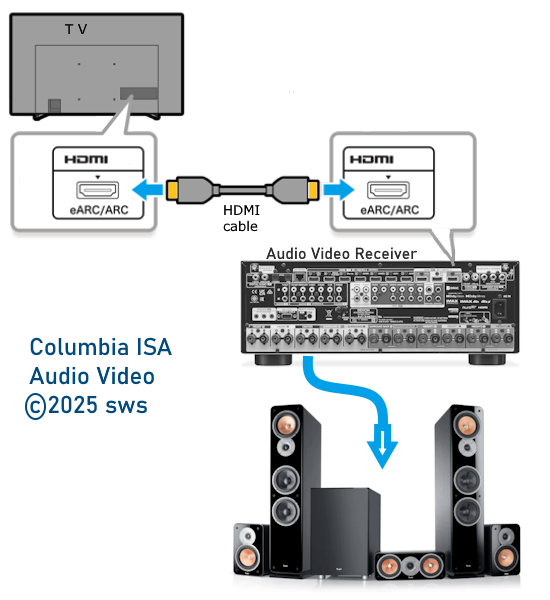
TV Speakers AVR Full Surround Sound
There is a fourth option if your TV has built-in Bluetooth and many smart TVs today do have this feature. Bluetooth is a short range wireless
technology used to send audio signals from the TV to a Bluetooth enabled soundbar or other external speaker setups. Bluetooth can only
send stereo signals and the sound may be limited in quality due to signal obstructions, distances or many other factors.
Once connected, if you're finding that your TV is still outputting sound through its built-in speakers, get the TV remote and select a few of your TV sound settings, including turning off your TV’s built-in speakers and enabling your TV to send audio out to an external speaker.

Connect Speakers to TV with HDMI
HDMI cable from TV HDMI ARC/eARC port to soundbar or AV Receiver HDMI ARC/eARC port.

Select correct audio output settings on
TV and correct input source on sound device.

How to connect external speakers to a Samsung TV
• How to Connect Speakers to TV
• Why you may not be getting the best Dolby ATMOS
• How to connect headphones to TV
• How to hookup Surround Sound for Netflix, Hulu
• Speaker setup surround sound
• Streaming TV and devices
• How to get Surround Sound from streaming TV
• XBox Series X Surround Sound Hookup
• HDMI Fiber Optic Cables
|
How to connect Speakers to TV
HELP! My TV sound is no good.
• I need to connect better speakers for a richer sound experience.
• How do I connect the TV sound to external speakers?
• How do I get surround sound?
• My TV only has Optical audio output jack
• My TV has NO audio output jack
There are many ways to solve all these questions. Using adapters and devices, you can get better sound for your TV.
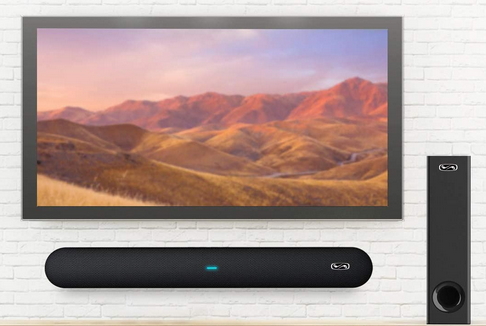
TV Soundbars and surround sound systems enhance your TV experience.
How to hear the TV sound through the A/V Receiver or Home Theater System speakers.
Can I connect external speakers to my TV?
Yes you can. There are many ways to connect speakers to TV. How you do this depends on what kind of TV you have,
what kind of speakers you have, what kind of cables you have and
how you want to hookup.

You may want to get a soundbar if space is limited. Soundbars have
speakers inside and can connect to TV for better sound. Most have remotes to control volume.
Make sure you get a product with the connection capabilities to match your TV audio ports.
The best option is a full home theater system consisting of audio/video receiver and multiple full size
loudspeakers. This option is more expensive and takes up more space but provides the best possible sound.
Options to connect TV include the following:
Wired
• Connection using HDMI cable. HDMI.org
HDMI is best for the highest audio formats such as Dolby Digital Plus used by streaming content providers.
A TV with HDMI ARC / eARC can be connected to a soundbar or Audio Video Receiver or even powered speakers.
• Connection using Optical audio cable
Optical can handle Dolby Digital 5.1 or 2-channel stereo.
• Connection using analog audio RCA cables or 3.5mm audio cable.
RCA phono cables (white, red) and 3.5mm Aux are analog stereo audio only.
1. HDMI cable connection using HDMI eARC/ARC (newer TV)
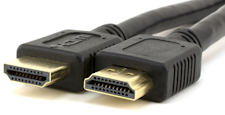

2. Optical digital audio cable connection: This connection will be used if your TV doesn't have an HDMI jack labeled ARC/eARC.
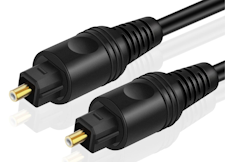

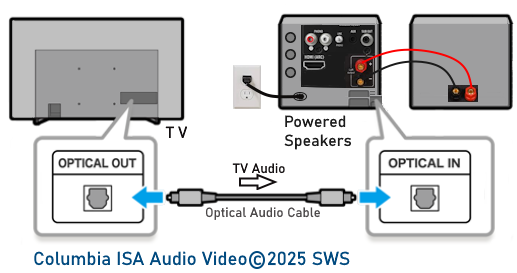
3. Analog audio cable connection: This connection will be used if your TV has RCA (white, red) or 3.5mm headset audio output.

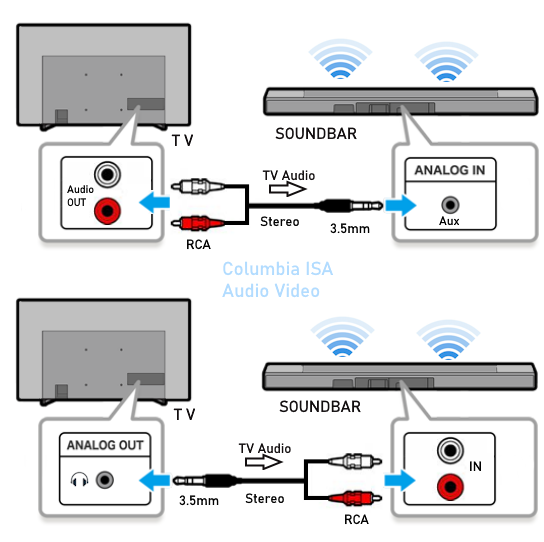

SOUNDBAR Ports - HDMI, Optical, 3.5mm Aux
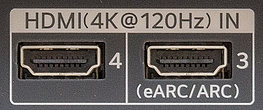
TV HDMI ARC/eARC port
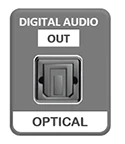
TV OPTICAL Audio output port
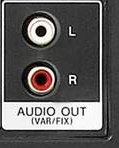
TV RCA Audio output port

TV 3.5mm Audio output port
Setting up TV sound output
In addition to making your cable connection from the TV to an external sound system, you may need to
adjust the TV sound settings so the TV outputs the correct audio formats.
Using the TV remote control, press the HOME or MENU button to bring up the TV Settings screen, then go to SOUND.
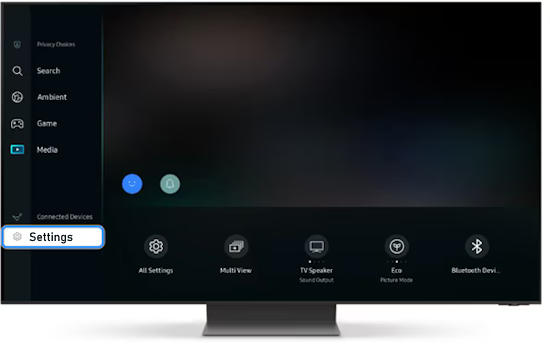
Samsung TV go to SETTINGS> all settings

Every TV make and model will have different looking menus and different options. You want to select "External Speakers" instead of
"TV Speakers" so the sound goes out to your connected sound device. Next, be sure you select the correct audio type and format
for the cable connection. The newer TVs have many options.

TV audio sources can be stereo or surround sound. You may need to adjust both the TV and the external sound system's audio
menus to get the best sound.
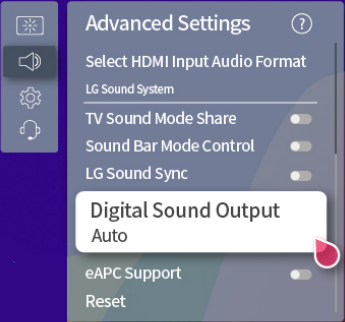

Selecting an audio setting on a TV
"PCM" means the TV will output uncompressed audio.
"Passthrough" allows the TV to pass along the original encoded/compressed digital audio format from the source to your soundbar/receiver for processing.
"Auto" will attempt to automatically select the best audio format based on the source content.
PCM (Pulse-Code Modulation):
Best for simple stereo sound, as it outputs the audio in its most basic, uncompressed form.
Ideal if you are only using your TV speakers or want the most basic audio quality.
May not provide the full surround sound experience if your audio content has multi-channel audio.
Passthrough:
Sends the original encoded audio format (like Dolby Digital, DTS, or Dolby Atmos) directly to your external receiver for processing.
Provides the best sound quality for multi-channel surround sound setups when used with a capable AV receiver.
Requires that your AV receiver supports the specific audio format being passed through.
Auto (Automatic):
Automatically selects either PCM or Passthrough depending on the audio format detected in the source content.
May not always provide the best audio quality as it could default to PCM when a higher quality encoded format is available.
Use PCM
if you only want basic stereo sound, are using your TV speakers, or if your receiver does not support the most advanced audio formats.
Use Passthrough
if you have a home theater receiver and want to take advantage of the best possible surround sound quality with advanced audio formats.
Use Auto
if you want the TV to automatically choose the best audio format based on the source content, but be aware that it might not always select the optimal option.
Is Passthrough the same as Bitstream?
Not exactly. Bitstream refers to the raw, encoded data stream itself, whereas "passthrough" refers to the feature that a device uses to send that bitstream along without decoding it, allowing another device to handle the decoding process instead; essentially, "passthrough" is a function that transmits the "bitstream" unaltered.
Bitstream: A sequence of digital bits containing encoded audio information.
Passthrough: A feature on a device that sends the received bitstream directly to another device without decoding it first.
Passthrough transmits the original encoded bitstream over HDMI connections. Passthrough is supported for Dolby Digital (AC-3), Dolby Digital Plus (EAC-3), and Dolby Atmos (EAC-3 JOC) bitstreams.
Dolby Digital Plus JOC (Joint Object Coding) refers to the underlying technology used to deliver Dolby Atmos via the Dolby Digital Plus audio format.
Dolby Digital Plus is the audio format used by internet content providers and may contain Dolby ATMOS metadata.
Wireless
• Connection using Bluetooth. Bluetooth.com
• Connection using Wi-Fi TV device
• Connection using WISA Wireless HD Audio
Sources of content
The source of your TV content, how you get your TV content, will determine to a great extent, how you enhance your TV sound.
• Broadcast or over-the-air TV.
• Satellite TV.
• Cable TV.
• Internet TV (Streaming).
• DVD or Blu-ray or VHS.
• Content you create on phone or video camera
Age of TV
Your TV will be a factor because the older your TV, the less connections are available.
• Analog tube TV - with only a RF or twin lead antenna connection. No audio out.
• Analog tube TV - with RF and RCA composite input connections. Possible headphone output.
• Analog tube TV - with RF, RCA composite and component connections and possibly VGA input.
• Digital TV - with RF, composite, component, VGA and HDMI. Optical audio out. Possible RCA audio out.
• Digital TV - with RF, HDMI inputs including HDMI Audio Return Channel. Optical audio out.
Connecting speakers to TV with no audio out or limited audio out
If you view TV using an antenna or satellite dish or cable box or internet streaming device or DVD or Blu-ray player or VCR,
you can connect speakers for better sound. The trick is you connect the speakers to the audio source and the TV sound is
muted, not connected or the volume is turned down. The audio is routed from the source device to the speakers. The source device is a
digital to analog TV converter box or a satellite or cable TV receiver, or internet streaming device or your DVD player and so forth.
The speakers can be a soundbar, audio video receiver or stereo receiver with attached speakers or just powered speakers.
These have audio inputs which connect to the audio outputs on the source devices.
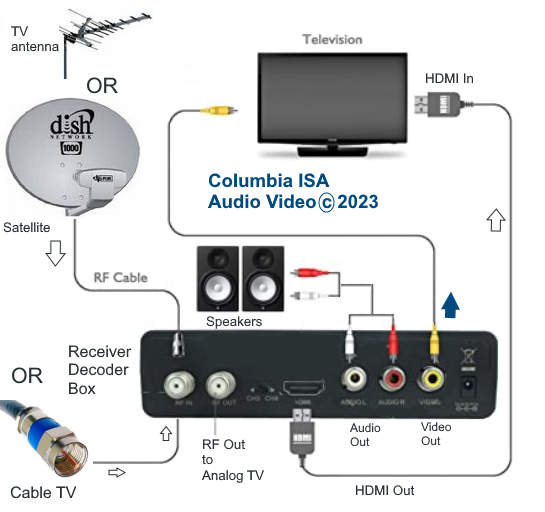
POWERED SPEAKERS - STEREO SOUND

Powered speakers come with a left and right speaker for stereo sound. One speaker will have a built-in amplifier. Inputs can be
RCA analog (white and red), optical for a direct connection to TV optical out or even HDMI.
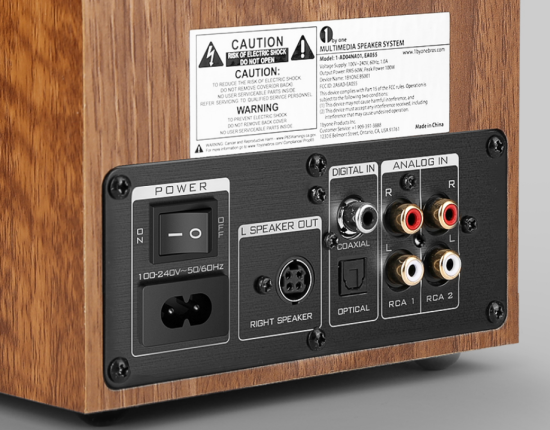
Some powered speakers have optical and coaxial audio inputs so you can connect directly from a TV audio output.
For those powered speakers or vintage stereo receivers without optical inputs, you can use a DAC or digital to analog converter to
take the optical or coaxial input and then output RCA analog 2-channel stereo (white and red). This way you can connect a newer TV
to speakers or vintage stereo receiver.
Internet TV - Streaming
The newer so called smart TVs have certain internet sources that can be accessed for content either using built-in apps or using an
external streaming device connected to the TV. Your home internet service is the gateway to internet TV content. But did you know that
you do not need a smart TV to view internet content? Yes, you can use your old tube TV and all you need is a streaming device and a
hdmi to RCA adapter.
For a TV with only an antenna RF coaxial input you can connect an RF Modulator which will take the 3 RCA cables
(yellow, white, red) and convert to single wire RF coaxial cable for connection to TV antenna RF input.
Streaming devices such as the Amazon Fire TV stick are very popular. To connect to an older tube TV, insert the stick
into the HDMI side of the adapter and using RCA cables for output, connect the yellow video cable into the TV (or use an RF modulator) and
connect the white and red cables into a powered speaker or stereo receiver or audio video receiver for much better sound.
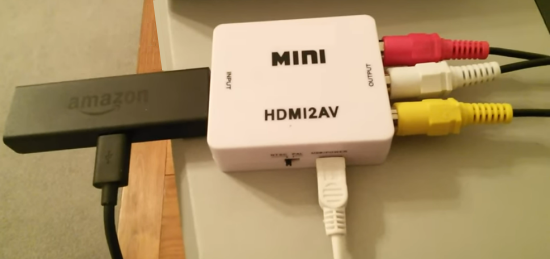
The stick and the adapter need power. You can use a USB surge protector power strip.

The latest versions of TV streaming devices have Dolby Digital Plus surround sound capability.
Connecting the streaming stick directly to the AVR assures high level surround sound where connecting the stick to the TV means
that the TV must be capable of passing the surround sound audio format to the AVR or soundbar. Some newer TVs can pass most
and some can pass all but many TVs cannot passthrough the higher end audio formats. In this case, the TV may downmix
to 2-channel stereo before sending out to soundbar or AVR.
HDMI to RCA Adapter
•
HDMI to RCA: HDMI to RCA adapter converts HDMI video signal or audio singal to normal (AV) composite signal, available for TV, VHS VCR, DVD.
HDMI wired connection
Most modern flat screen TV will have HDMI connection options. The HDMI ARC/eARC connections will offer the best
possible sound. Look on the back of your TV to see if your TV has these ports. There should be a label showing which HDMI
port has the HDMI ARC/eARC capability.
• HDMI Audio Return Channel (ARC) and enhanced Audio Return Channel (eARC)
The HDMI ARC/eARC capable TV can send sound out from the TV to a sound system for better TV audio. Using the HDMI ARC/eARC connection
and an adapter, you can connect to almost any sound speaker setup including vintage stereo systems.
Your TV may have HDMI ARC or the newer eARC. ARC or audio return channel allows a HDMI cable connection for sending video and audio over
the same HDMI cable. Once connected, you may need to navigate to your TV settings menu for SOUND and make sure CEC and ARC are both
enabled or ON.
CEC or consumer electronics control allows you to control volume and power with one remote for devices which comply with the standard.
Manufacturers call CEC by different names. Only VIZIO calls it CEC while the rest use names such as BRAVIAsync (SONY), AnyNet (Samsung),
Simplink (LG), Vieralink (Panasonic).
Using the TV remote, navigate to SETTINGS, and GENERAL, DEVICE MANAGER or HDMI control, then the CEC name of the make of TV.

TV rear HDMI port 3 is the ARC/eARC port for connection to sound systems.
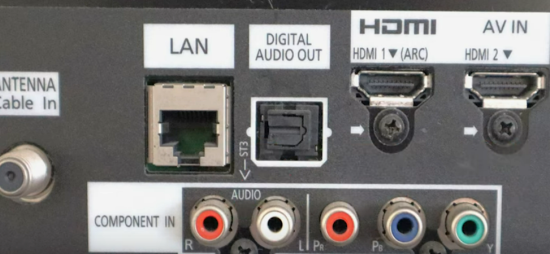
HDMI port 1 is the ARC port. Be sure to connect the HDMI cable to the ARC port.
Using a capable HDMI cable, you can connect to a soundbar HDMI port or a
modern audio/video receiver HDMI ARC/eARC port.
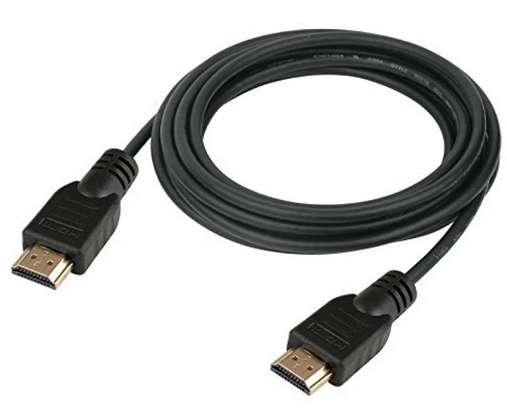
HDMI cable
Next, navigate to the menu options on the TV for SOUND and select
the appropriate settings for HDMI connection. Also, you may need to select the proper settings on the soundbar or
the audio/video receiver. The audio/video receiver can have 6, 7, 8 or more speakers connected for the best sound.
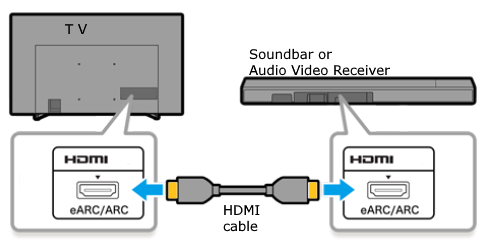
HDMI cable connection diagram for enhanced TV sound
TV sound out to speakers using adapters
You can connect speakers using adapters for the HDMI ARC connection from the TV. Vintage stereo, mini stereo, powered speakers can all be
connected using an HDMI adapter.

If you cannot get the sound to work, unplug the TV, unplug the HDMI cables, unplug the sound system and wait 5 mins. then plug the TV and sound system back in
and plug in the HDMI cables. Make sure the sound is not muted, turn the volume up, select the proper input on the sound system.
For vintage stereo receivers you can use the PLAY input or the AUX input or the CD input.
HDMI can sometimes be difficult since each manufacturer can choose which features of the HDMI standard to implement. Incompatibilities sometimes mean you have to
get different gear to make it work. One device may work with Samsung, Vizio and LG but not Panasonic.
Optical digital audio out connection
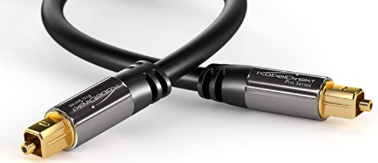
Optical audio cable
If your TV only has an optical audio output, you can use this option to connect to a soundbar or audio video receiver or
modern mini stereo amp with an optical input
using an optical audio cable. This option has less capability than HDMI but still can provide great sound.
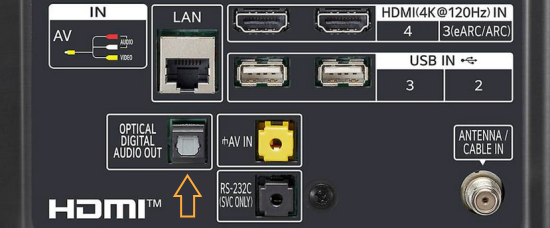
Optical audio output on TV rear panel

Optical audio cable connection diagram for better TV sound
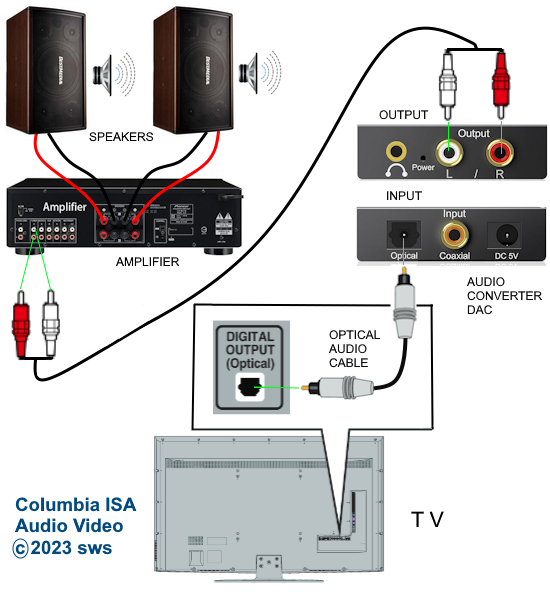
Diagram TV sound out to DAC to Amplifier and Speakers
Select correct input on Amp and control volume on Amp
Wireless Bluetooth Home Stereo Amplifier - Multi-Channel 200 Watt Power Amplifier Home Audio Receiver System w/HDMI, Optical/Phono/Coaxial, FM Radio, USB/SD, AUX, RCA, Mic in - Remote
Digital to Analog Audio Converter DAC Digital SPDIF Optical to Analog L/R RCA Converter Toslink Optical to 3.5mm Jack Adapter
RCA analog stereo connection
If your TV only has an analog audio output, either RCA stereo (white and red) or the 3.5mm AUX port, then you can
connect the TV to a stereo system or soundbar or audio video receiver but only for two channel sound. This can
still provide much better sound than the TV speakers.
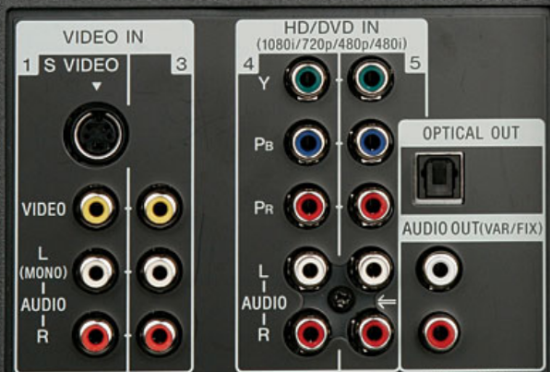
Older TV with analog audio out (RCA white and red, bottom right corner)
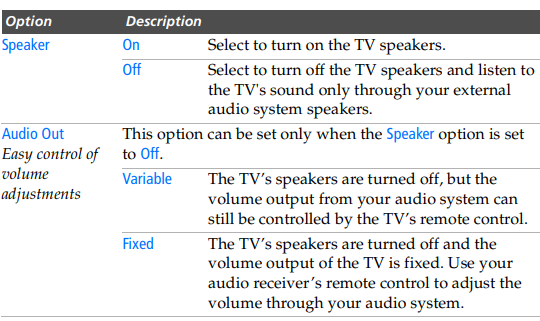
When connecting TV to speakers or stereo systems, usually the TV speakers are turned OFF and the volume control is done
by the powered speakers or stereo system. Some TVs offer the option to set the volume at a fixed level or variable so the TV
remote can still be used for volume control.
If you connect a headphone to the TV audio output and the volume level is fixed, you may need volume control for the headphones.
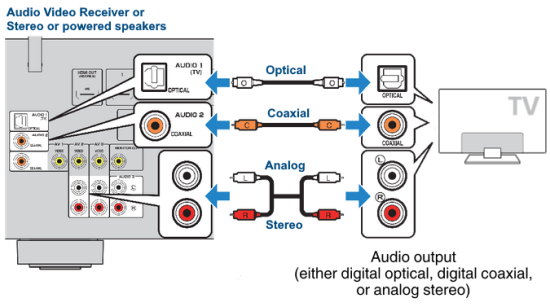
TV sound out to stereo or AVR or powered speakers
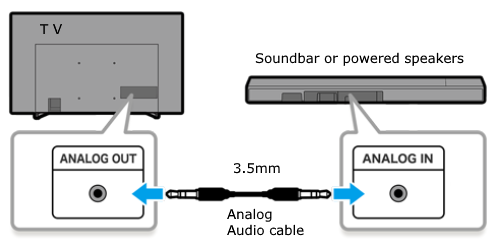
Analog stereo audio cable connection diagram for better TV sound
You may need to navigate to the SOUND menu selections on the TV using the TV remote and select
"External Speakers" instead of "TV Speakers".
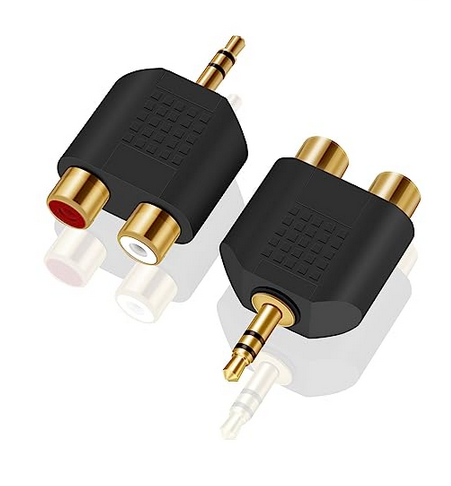
Adapter for RCA analog stereo to 3.5mm stereo
Wi-Fi TV device connection
If you have home internet service and a streaming TV device, you can simply use your TV as a video only display
while enjoying the latest surround sound from soundbar or audio video receiver with loudspeakers. By connecting
the streaming device to a compatible soundbar or to a capable audio video receiver, you can deliver Dolby ATMOS
sound while passing the video to the TV using the HDMI ARC/eARC connection.
• TV streaming surround sound
o TV Surround
Sound
o Audio Output
HDTV
Digital Optical, Analog, ARC
o TV has NO sound output other than built-in speakers.
How to
convert HDTV optical digital audio
output to RCA analog audio
Audio Return Channel and other options |
Does your TV have only an optical digital audio output, only
an
analog RCA stereo out or no audio output options at all?
Often, TV manufacturers today only offer an optical audio output, a
stereo output or no output at all for
sound from your TV.
Many people do not have an audio/video receiver
with the capability to decode surround sound or have any audio device
with an optical input.
So how do you get sound out from the TV to
external amplifiers or speakers for richer audio?
Depending on what gear you have or are willing to buy, there are many
options. Surround sound is available from a variety of sources
including over-the-air TV broadcasts, cable, satellite programming,
games (XBOX, Playstation), Blu-ray discs, DVD, and more.
There are
converter boxes, switches, adapter cables and more, all available to
meet your audio goals.
How to connect Speakers to TV
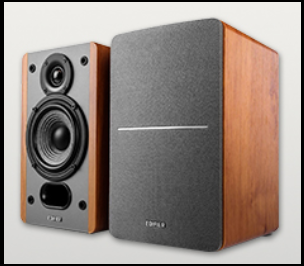
If you want a simple stereo speaker setup for better TV sound and you do not need surround sound and you do not want to use
a soundbar then you can connect stereo speakers to the TV either by using active speakers and a RCA, AUX cable connection, or
use passive speakers with a stereo amplifier connection.
Powered or Active Speakers and Passive Speakers
You can use active speakers without the need for a stereo amplifier because these speakers have the amp built in while the
passive speakers require a stereo amp or receiver. Active speakers have inputs for RCA, Aux while passive speakers only
have speaker wire connections which connect to a stereo amplifier. The RCA audio cables or Aux cable connects to the amp.
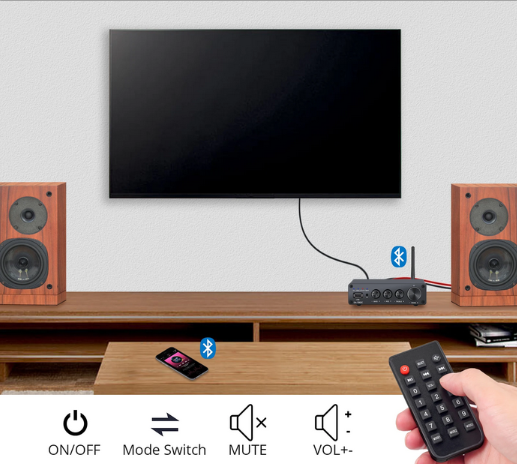
Mini stereo amp with passive speakers connects to TV for better sound.
Remote control of volume levels. Bluetooth models can play music from mobile phones.
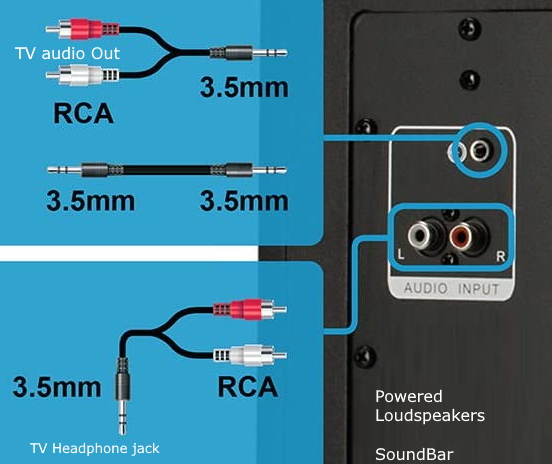
You can get small stereo speakers which have a built in amplifier and remote control for volume and connect
to your TV or your cable or satellite box or a DTV converter box for better TV sound. This setup has a variety of uses.

Connection diagram for old style TV using DTV converter box and active speakers to get much better TV sound.
If you have an older TV and are using the DTV converter box for free local broadcast TV, you can
get powered speakers for much better TV sound.
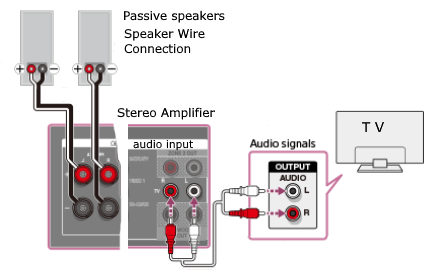
Connection diagram for TV speakers using stereo amp with passive speakers.
If your TV only has an optical audio output, you either need an audio digital to analog converter which will
allow the TV optical audio cable to connect to the DAC input and allow two RCA cables (white and red)
to connect to the DAC output and then to the stereo RCA inputs or you can get a stereo amp with an
optical audio input. If your TV only has a 3.5mm Aux audio
output, you need an audio cable with 3.5mm plug at one end and RCA white and red at the other end.
Bluetooth wireless stereo speaker connection
How to connect TV to speakers wirelessly
If you have a modern TV with Bluetooth, you can get a Bluetooth stereo amplifier connected to speakers for
better TV sound.
Fosi Audio BT20A Bluetooth 5.0 Stereo Audio 2 Channel Amplifier Receiver Mini Hi-Fi Class D Integrated Amp 2.0 CH for Home Speakers 100W x 2 with Bass and Treble Control TPA3116 (with Power Supply)
Bluetooth 5.0 core, up to 50ft connection range guarantees low signal delay.
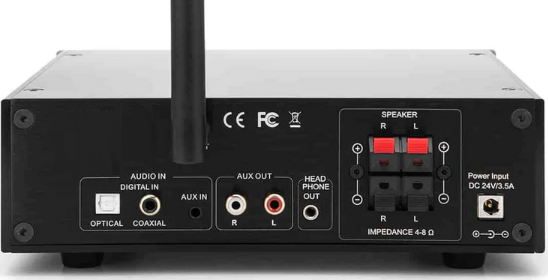
Stereo Amp with Bluetooth, passive speaker wired connections, optical input, aux input
Audio Goals -
1. Get surround sound or stereo sound from TV to a soundbar,
audio/video receiver, or stereo amplifier for richer sound.
2. Get surround sound or stereo sound from TV with no audio outputs.
3. Get sound from TV with only optical output - only using stereo
amplifier.
4. Get sound from multiple A/V sources when TV does not have enough
inputs.
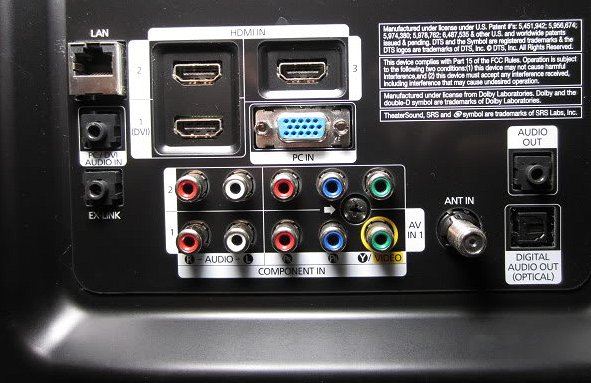
HDTV REAR PANEL
Some HDTVs have both analog audio out and digital audio outputs but
many TVs only have digital optical
audio out using an optical jack. In the
image above, the optical output jack is bottom right. It is labeled
DIGITAL AUDIO OUT
(OPTICAL). This is capable of surround sound or stereo (PCM). Some TVs
have a
3.5mm audio output jack for stereo sound. Just above the optical,
labeled AUDIO OUT.
Soundbar
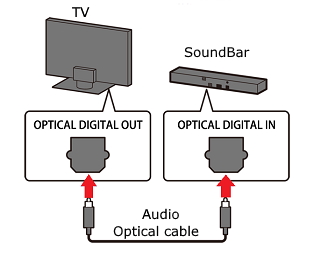
Optical audio cable hookup is good for stereo or 2-channel audio or Dolby Digital 5.1,
but not for more modern audio sound such as 7.1 or Dolby ATMOS.
The point is that as technology advances, HDMI will be the connection of choice as HDMI can handle
every possible sound configuration from created sources in the near future.
Soundbars will not yield true surround sound. You need an Audio/Video Receiver for that
with 6 or 8 loudspeakers or more.
However, a soundbar will indeed yield better sound than TV speakers.
Remember to set the TV sound to the appropriate output using the TV menus.
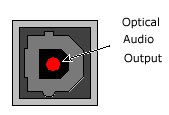
The image above shows a closeup of an optical jack. You use a Toslink
optical
audio cable to connect to a soundbar or audio/video receiver or home
theater optical audio input. This way you can get surround sound or
stereo sound.
For the analog audio 3.5mm audio out, use a audio
cable with either
3.5mm plugs at both ends or an adapter
cable which has 3.5mm at one end
and two RCA plugs at the other end to connect to stereo amplifier or
receiver.
Soundbar for TV sound solutions

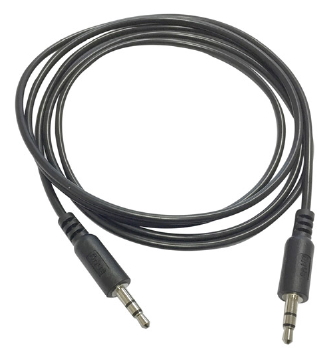
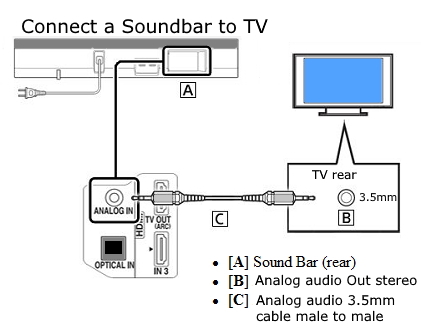
If TV has only RCA analog audio Outputs, use a RCA stereo to 3.5mm adapter cable to connect.
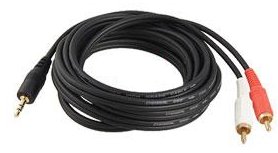
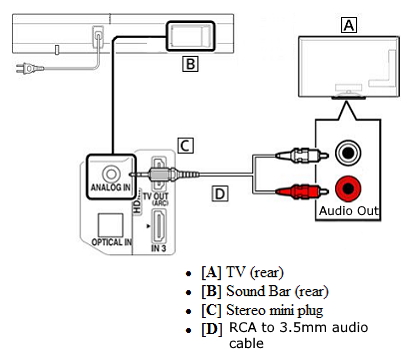

Diagram - TV Sound Output
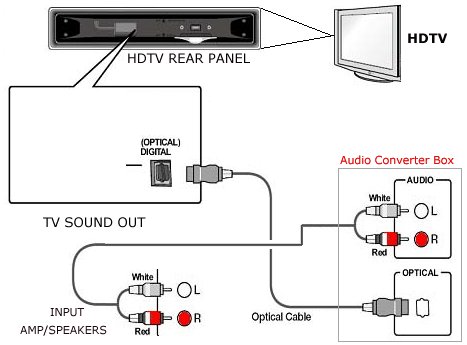
Diagram - Converter box takes optical
input and outputs to RCA analog
audio. For TV with only optical audio output.
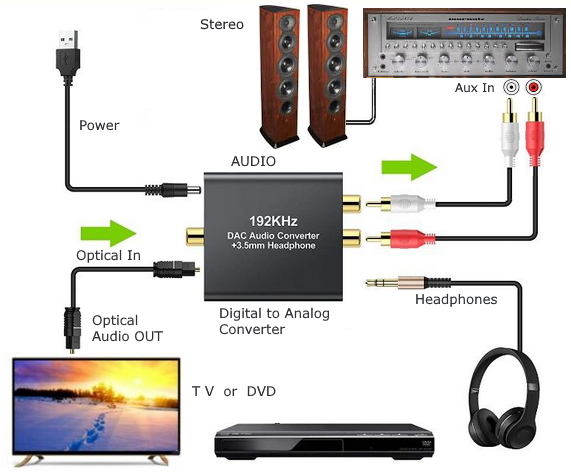
Use a DAC to convert TV optical audio output to a analog stereo input to amplifier or receiver for better sound from TV. Vintage stereo gear can use the AUX RCA inputs.
PROZOR 192KHz Digital to Analog Audio Converter DAC Digital SPDIF Optical to Analog L/R RCA
Converter Toslink Optical to 3.5mm Jack Adapter
Set TV audio output to PCM
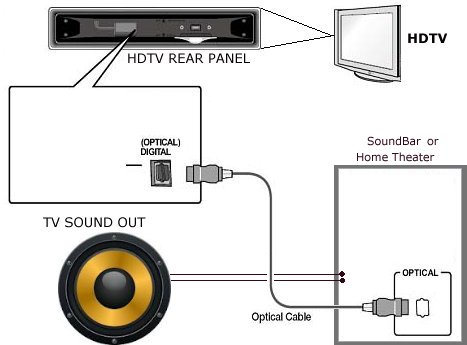
DIAGRAM - HDTV optical connected to SoundBar or Home Theater for
surround sound.
TV has NO audio
outputs
Solution 1: Use
your Cable TV or Satellite TV receiver box.
If
you are using a cable TV box or satellite TV receiver box to get your
TV programming, connect the analog audio outputs (white and red audio
OUT on the rear panel of the cable box) using a standard RCA stereo
audio
cable (white and red) to your stereo amplifier inputs or wireless
speakers or other device.
The white and red analog audio outputs are
next to the yellow video output. These analog outs are usually
available on todays cable boxes for older TVs or VCRs but you can
hookup cables to the analog audio outs only and get the sound for your
TV show sent out to an amplifier and speakers. This also works for a
DTV converter box when using only an antenna for over the air TV
broadcasts. These converter boxes have RCA audio outputs to carry sound
to an amplifier.

DIAGRAM - TV stereo sound from cable/satellite TV set top box
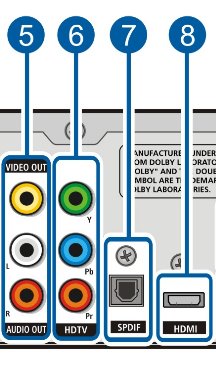
Digital Cable/Satellite TV
set top box rear panel
Surround sound (when available) from the SPDIF output (7) can be used
to connect to a soundbar or home theater if TV has no audio output.
Usually requires a Toslink audio cable to connect.
Sometimes this solution works well and you do
not need to buy anything.
Some issues may occur with this solution such
as an audio delay. Your TV may have a feature to adjust audio delay but
if it does not and you are getting an audio delay, then go to the next
solution.
For DVD, Blu-ray, Xbox, Playstation sources, connect to A/V receiver
via HDMI or optical audio.
Use an HDMI switchbox for multiple sources such as games, DVD,
Cable/Satellite.
Use this HDMI switch to access sound from all your sources, including
cable TV or
game boxes and also a TV tuner box such as an ATSC TV tuner box. Just
connect
the audio output on the HDMI switch box to your audio
amplifier/receiver. Use the
optical audio or the HDMI output if your receiver has HDMI input, then
run HDMI
cable on to the TV. You can also use a soundbar.
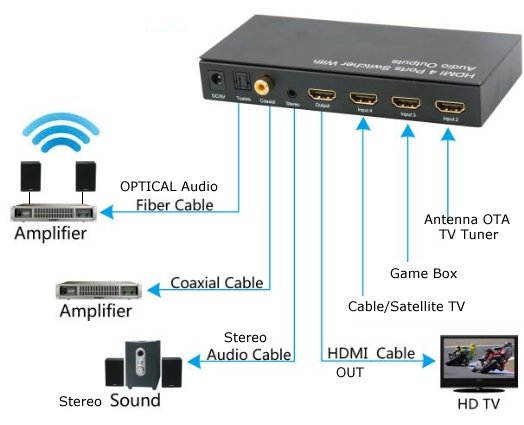
Diagram Hookup TV HDMI Switch
box for sound
TV Tuner Box with
ATSC, HDMI out
Viewtv
At-163
ATSC Digital TV Converter Box and Media Player w/ Recording PVR
Function / HDMI Out / Coaxial Out / Composite Out / USB Input
http://www.amazon.com/Viewtv-Converter-Recording-Function-Composite/dp/B00GGVPKKC
http://www.viewtvbox.com/
Using this TV tuner box and a audio/video receiver, you can connect the
HDMI or digital audio output from the tuner to the AVR and then HDMI to
TV.
Solution 2: Use an
ATSC TV
Receiver box.
These boxes
cost around $30 to $40. Connect a UHF/VHF
antenna to the tuner box,
connect an
HDMI cable to TV and connect, typically a coaxial digital audio cable
to
a surround sound soundbar or A/V receiver. Or use the RCA white and red
stereo outputs on the ATSC tuner box to hookup to stereo receiver and
speakers.
These boxes usually record also to a USB thumb drive. Watch
one program using big screen TV tuner while recording
another show using the ATSC tuner box. These tuners will give you audio
output if your TV will not. Usually these tuner boxes have surround
sound outputs such as a digital coaxial which you can connect to a
surround sound receiver.
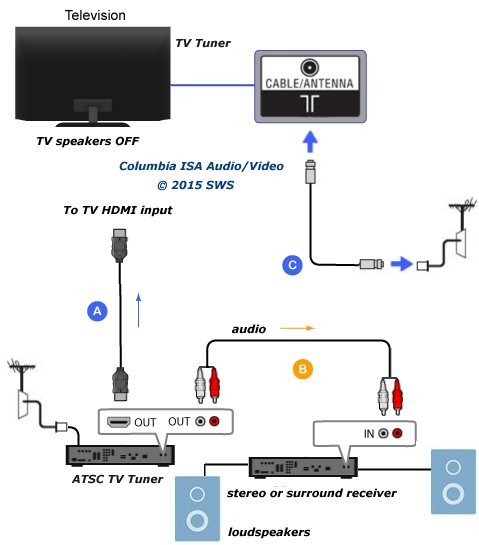
Diagram - Use two TV tuners, one for richer sound or if TV has no audio
output and one for viewing.
Solution 3: Use a HDMI audio extractor.
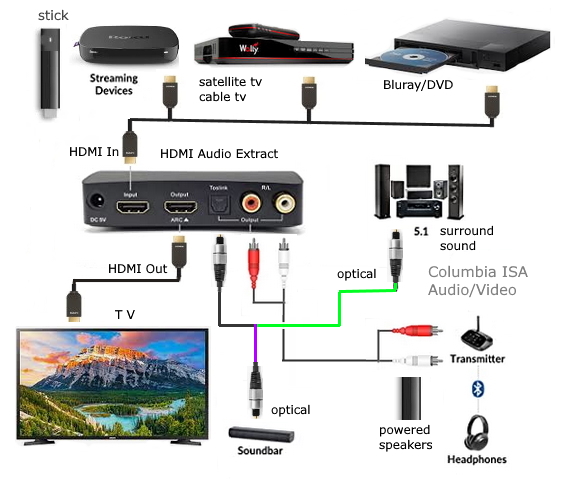
For more than one HDMI input device, use a HDMI switch box to connect multiple HDMI source devices.
Use
an audio converter.
This solution involves an audio converter box which
you will need to buy. Cost can be from $25 to $68 or so. These small
devices will accept the optical cable connection from your TV and allow
the stereo analog RCA output connection to your amplifier or other
device.
There are some considerations here, such as:
Does the converter box actually convert the digital audio to analog or
just pass
whatever the TV is sending out from the optical output? Some converter
boxes actually convert
the digital bitstream to analog audio but others will only pass a PCM
2-channel signal to the analog RCA output.
If you see a warning regarding the audio converter box you intend to
buy such as the example below, be sure your TV can output 2-channel
stereo and not just 5.1 signals.
IMPORTANT
NOTE! This device will NOT decode
5.1-channel signals. It will ONLY convert 2-channel digital stereo
(PCM) input signals to analog stereo output. This will not work with
TVs that only output 5.1-channel digital signals!
The best converters will convert surround sound to 6 channel analog
audio. Look at the audio converter box. Does it have 6 RCA output jacks
or
just 2 RCA outputs?
The reason this is important is because some TVs do
not have the option to output their audio as 2-channel PCM over the
optical out,
only as Dolby Digital
5.1, which needs to be decoded. Go into your TVs audio menu to check
which audio output options are available.
If your TV has the option to output
sound as 2-channel PCM or Dolby Digital 5.1, then you can buy a
converter box
with
only 2 RCA outputs (although you may want to buy a box with 6 analog
outputs). Set the TV to output PCM audio and connect a
standard stereo RCA cable to the converter box RCA outputs and then to
your inputs on a stereo receiver or other sound device.
If your TV can only output Dolby Digital 5.1 surround sound, then you
need a converter box which can decode the optical bitstream to 6
channel analog audio.
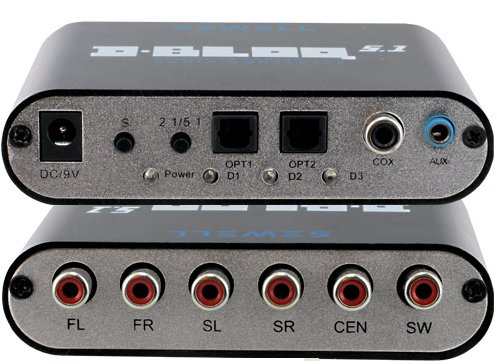
Audio converter box which takes optical input and outputs 6 channel
analog audio.
If you only have a stereo amp, only connect the FL (front left) and the
FR (front right) cable connections.
Converter box with only 2 analog audio connections. This box does not
convert the optical digital audio so you have to be able to give it PCM
2-channel audio.
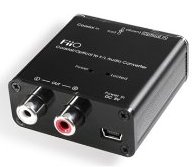

This box accepts optical or coaxial digital audio cables.
Audio converter box for 6 channel analog audio output.
There are also soundbars
with optical inputs and wireless headphones
with optical inputs that may offer a solution. Soundbars for your TV
will give you some
enhanced sound while headphones will allow private TV listening. You
could also buy a home theater in a box system from Samsung, Sony, Onkyo
or Panasonic. These have optical inputs and give you richer sound from
loudspeakers. Just connect an optical audio cable from the TV to the
sound system and start enjoying better sound than your TV speakers can
produce.
• Turntable
to PC hookup / record vinyl LPs to computer
• PC
to Stereo hookup - how to play computer thru sound system
• Audio
cassette to computer hookup - how to record audio cassettes to PC
• PC
stereo hookup
Question:
Is
there a speaker which accepts an optical input?
Answer:
Yes.
Behringer makes a stereo speaker setup with amp and DAC which has an
optical input. See below.
Behringer
Speaker MS40 Digital 40-Watt Stereo
2-way active studio monitors ideally
suited for
computer studios, audio and multimedia workstations and keyboard
monitoring
Built-in 2 x 20-Watt amplifiers
Powerful woofers and high-resolution
tweeters
provide an ultra-linear frequency response
Ultra-high resolution 24-bit/192 kHz D/A
converters
for an incredible dynamic range
Optical and coaxial inputs to directly
connect
digital audio sources by S/PDIF interface
25.6 x 9.1 x 13 inches ; 21.3 pounds

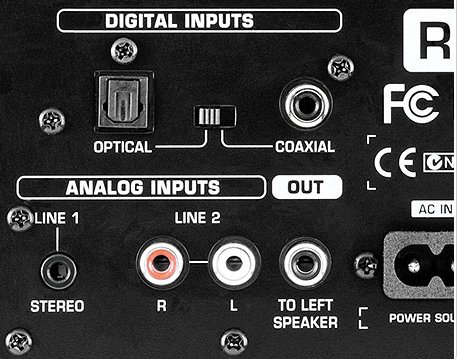
Rear of Behringer Speaker - Optical Input and Coaxial Input plus Analog
Inputs
HEADPHONES for TV
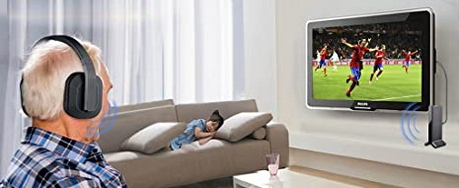
Headphones for a TV
has many uses including private listening, volume increases for older folks without disturbing others, mobile listening and more.
There are basically three types of hookups, 1) wired, 2) wireless Bluetooth and 3) wireless RF. Wireless Bluetooth has some limitations such as about a
30 feet maximum distance of signal reliability and Bluetooth can suffer from an audio lag issue where the audio is not in synch with the video
creating a lip synch issue. More expensive Bluetooth headphones can sometimes fix this problem. Wired headphones are also limited in distance
and create a possible tripping hazard with the wire connection. Wireless RF headphones work up to 100 feet and do not suffer from audio lag.
Since TVs can have 3.5mm audio out, RCA stereo audio out or optical audio output, make sure to get a headphone transmitter unit with the proper connection
to your TV. Connect the TV to the headphone transmitter unit using an audio cable. If the TV has only optical audio output, connect the optical cable only from the TV to the headphone
transmitter unit. Next, set the TV to external speakers and the audio output to PCM. Headphones should have volume control.
Wireless RF Headphones with transmitter
Has 3.5mm, RCA and Optical connections.
Avantree HT280 Wireless Headphones for TV Watching with 2.4G RF Transmitter Charging Dock, Digital Optical System, High Volume Headset Ideal for Seniors & Hearing Impaired, 100ft Range, No Audio Delay
Optical Cable for connecting TV to headphone transmitter
Audio Return Channel - ARC
ARC
is a newer technology, part of the HDMI spec. Your TV must have ARC
capability and the other devices such as soundbar must also be ARC
capable. ARC lets
your digital TV output digital sound to an audio device and input
digital sound from the same audio device over a single
HDMI cable. ARC is
only available through the HDMI (ARC) port and only when the TV is
connected to an ARC-enabled A/V
receiver.
With ARC you no longer need to connect an optical cable from the TV to
a soundbar or A/V receiver for sound. The same HDMI cable from the A/V
receiver to the TV which carrys DVD, Cable, satellite, Xbox, Bluray can
also carry, in the reverse direction, sound from the TV back to the A/V
receiver. You can send audio from internal TV sources like the
HDTV tuner, or
built-in web streaming apps to home theater, soundbar with HDMI.
Send out the audio from other
HDMI sources as the TV becomes the central hub.
The TV switches all the sources, and the audio for each one (Blu-ray
player, cable box, etc), would get sent to a soundbar or Home Theater.
If your TV has ARC already, you’ll just need to get a
soundbar, HTIB, or A/V receiver that also has ARC.
HDMI cables needed:
An Audio Return Channel-enabled TV allows you to send audio over an
already connected HDMI cable. Typically, in order to transfer audio
from your source (TV tuner) to your home theater you would need a
separate audio cable (analog audio or digital optical) going from your
TV to the home theater. With the ARC function, you can send any audio
from your TV back to an ARC enabled home theater receiver and listen to
your TV's audio through the home theater system without having to
connect an optical audio cable.
These
are one example of the steps to enable ARC (Audio Return Channel)
- Make
sure your audio receiver
is ARC compatible
and that your HDTV is ARC compatible.
- Ensure
that you have an HDMI 1.4
high-speed cable
that is multi-directional.
- Use HDMI 1
or HDMI (ARC) on your TV. This will need to be plugged into
the HDMI OUT
of the audio video receiver.
- MENU -
Sound - Digital Audio on
your TV, change to Dolby Digital.
- MENU -
Sound - Turn off
the TV internal speakers.
- Turn
CEC
on.
- Ensure
the receiver is in TV control and is in discoverable mode.
- (You may
have
to reference the user manual for your receiver)
- Search
for the device under CEC menu
- This
will unlock System Audio Control
(under CEC), turn to ON.
Connecting
a TV compatible with the Audio Return Channel (ARC) function via an
HDMI connection.
Diagram ARC for TV sound

If your TV
supports the Audio Return Channel (ARC) function, set the receiver by
the following procedure to output the sound of the TV from
the speakers
connected to the receiver.
- Select
[Settings]
- [HDMI
Settings] from the home menu.
- Select
[Control
for HDMI].
- Select
[On].
HDMI Switch Box
Some HDMI switch boxes have ARC
Hookup
Diagram for HDMI switch box |

•
How to get Surround Sound from streaming TV
• See
over 100 Hookup Diagrams
• TV
input select
• Timer
Record Radio Shows on a VCR
• Camcorder
hookup to TV, DVD
• Audio
Video Connections
• Hookup
Diagrams
Columbia ISA Audio Video
Empowering consumers through information
Contact: columbiaisa@yahoo.com
|
|

